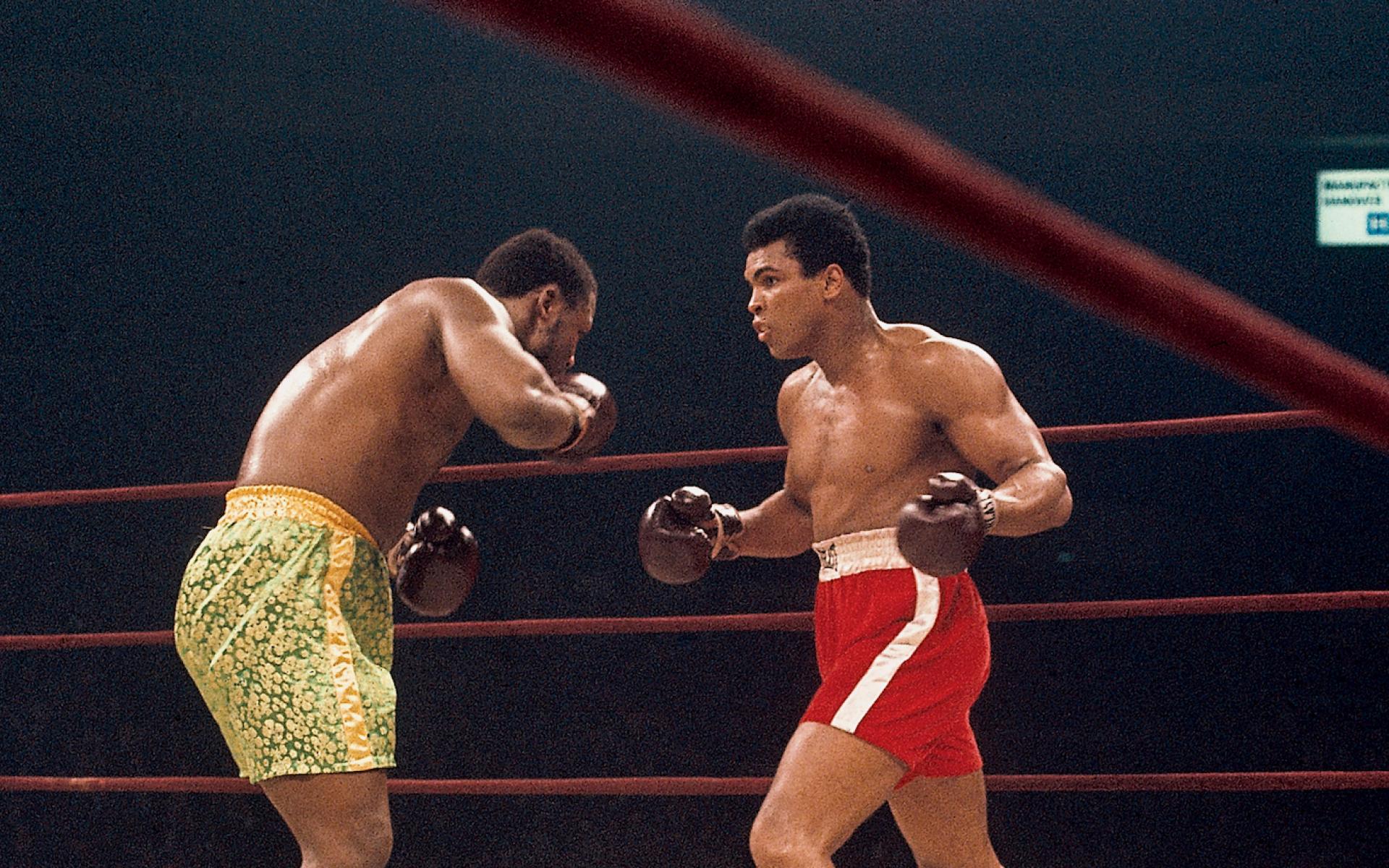Against the backdrop of Jim Crow, Ebony magazine addressed African American cultural and political realities. From the lives of Hollywood celebrities to the ongoing fight for human and civil rights, Johnson Publishing Company publications documented key moments in African American life that changed how we think about ourselves as a nation.
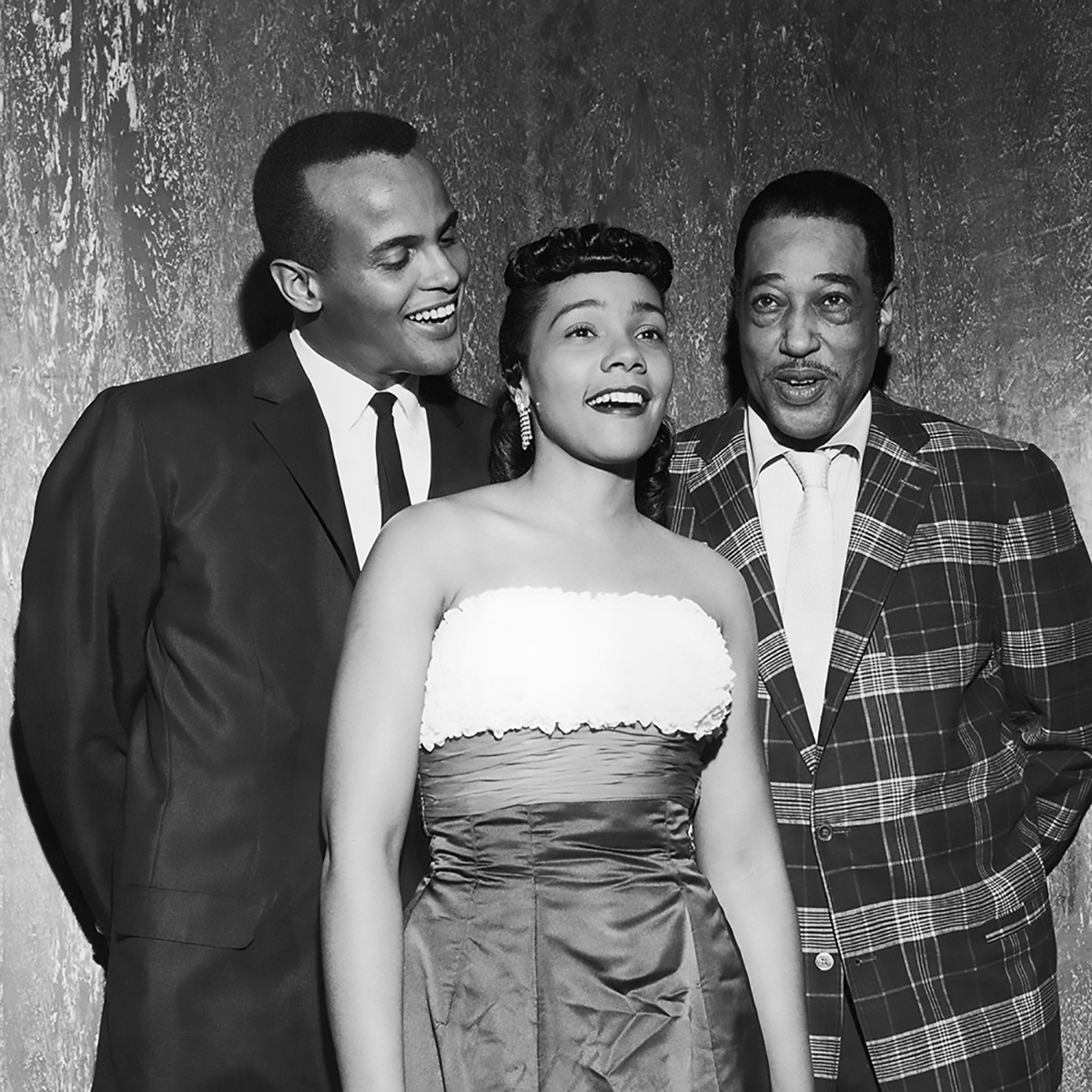 Harry Belafonte, Coretta Scott King, and Duke Ellington performing the month the Montgomery Bus Boycott ended, December 1956.G. Marshall Wilson/Johnson Publishing Company Archive
Harry Belafonte, Coretta Scott King, and Duke Ellington performing the month the Montgomery Bus Boycott ended, December 1956.G. Marshall Wilson/Johnson Publishing Company Archive
Starting with its first issue in November 1945, Ebony chronicled black life and contributions across regions and generations. In documenting the American experience, Ebony extended its value beyond its iconic place in American popular culture. As an archival resource, the publication reimagined its meaning and value as a vital record of American history.
Ebony was founded to provide positive images for blacks in a world of negative images and non-images. It was founded to project all dimensions of the black personality in a world saturated with stereotypes.
— John H. Johnson "Publisher's Statement," November 1975
Public Value and Meaning
Behind each photograph is a life experience and a story that gives each image its historical value and cultural meaning.
Aaron BryantPh.D., Curator, Photography, Visual Culture, and Contemporary History, National Museum of African American History and Culture
In November 1945, two months following the end of World War II, Ebony launched to document a particular worldview on the American dream and a new hope and vision for the nation. That year, animated by the confidence and optimism of veterans, African Americans began making more ardent demands for democracy as the armed forces returned home from war. Between 1945 and 1951, the year Jet magazine launched, calls for democracy began changing the nation’s laws.
It has been Ebony’s privilege to record, dramatize, and interpret this progress, from obscure court decisions to spectacular armed conflict; from the triumphs of a Jackie Robinson to the cathartic cries of a Marian Anderson or Gwendolyn Brooks.
— Editors, Ebony Magazine "Capsule History: 1945 - 1965," November 1965
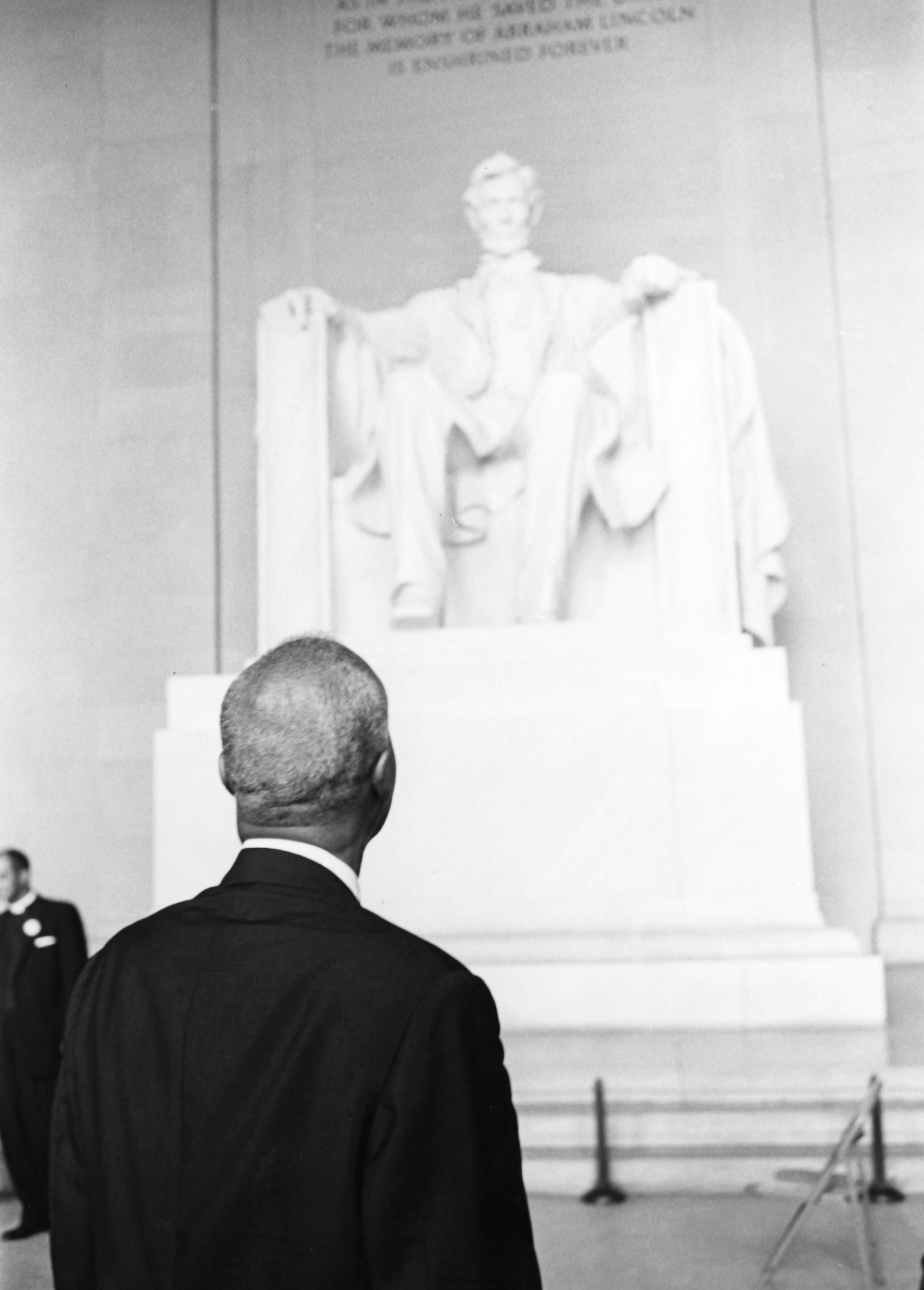 A. Philip Randolph stands before the Lincoln Memorial in tears at the end of the 1963 March on Washington for Jobs and Freedom, Washington, D.C., August 1963.G. Marshall Wilson/Johnson Publishing Company Archive
A. Philip Randolph stands before the Lincoln Memorial in tears at the end of the 1963 March on Washington for Jobs and Freedom, Washington, D.C., August 1963.G. Marshall Wilson/Johnson Publishing Company Archive
The Supreme Court made decisions on several key cases, including Morgan v. Virginia (1946), ruling that segregation on interstate travel by bus in Virginia was unconstitutional. In Shelly v. Kraemer (1948) and Hurd v. Hodge (1948), the Court nullified restrictive housing covenants. In the case of Henderson v. the United States (1950), the Court ruled against segregated dining cars on trains, and in Sweatt v. Painter (1950), the Court ordered that Heman Sweatt, an African American law school applicant, be admitted to the University of Texas Law School, after the university tried creating a “separate but equal” law school for black applicants. In this case, the Court found the "law school for Negroes" unequal in several key areas, including a smaller faculty and library, course variety, and fewer opportunities for legal writing, which would keep black students from fairly and equally competing for opportunities in the field. This period of challenging Jim Crow segregation laid the groundwork for what later became the modern Civil Rights Movement.
Key to Ebony’s success was a roster of photojournalists who documented and communicated cultural symbols and values through images. They produced decades of visual commentary on black life and achievement to redefine photojournalism and reflect how black communities saw and imagined themselves. Through a unique visual voice and cultural lens, these photographers also chronicled black trials and tragedies, to look beyond the image’s surface and find its truth and humanity. Behind each Ebony photograph is a life and story that gives each image its value and meaning.
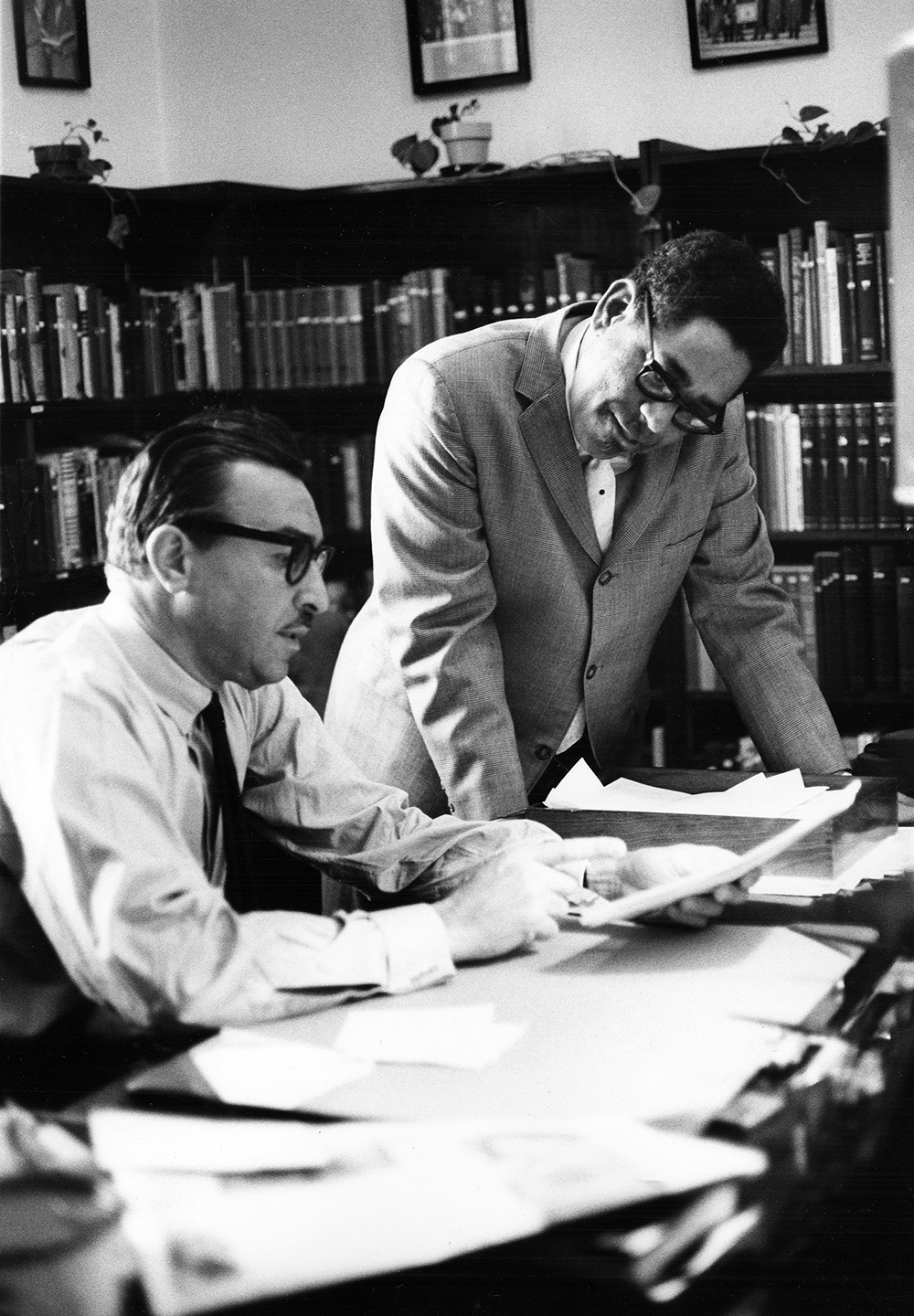 Jazz great Dizzy Gillespie with clergy and New York member of Congress Adam Clayton Powell Jr., in the congressman’s Washington, D.C. office, ca. 1964.Maurice Sorrell/Johnson Publishing Company Archive
Jazz great Dizzy Gillespie with clergy and New York member of Congress Adam Clayton Powell Jr., in the congressman’s Washington, D.C. office, ca. 1964.Maurice Sorrell/Johnson Publishing Company Archive
Few magazines dealt with blacks as human beings with human needs. Fewer magazines dealt with the whole spectrum of black life. It was, for example, rare for radio, newspapers or magazines to take note of the fact that blacks fell in love, got married and participated in organized community activities.
John H. Johnson"Publisher’s Statement," November 1975
By redefining the American narrative and shifting perceptions of black history and possibilities, Ebony mobilized national communities around critical periods of social change and became a medium for shared cultural symbols and perspectives. It reinforced a common past, present, and future that bonded readers through shared experiences and aspirations. Ebony was a vehicle for social interaction, self-naming, and validation, which defined the magazine's cultural value and private meaning to the communities it served.
While the main emphasis has been on the presentation of the positive side of Negro achievement, Ebony has not hesitated to face the grim realities of such ugly episodes in American life as the Emmett Till lynching or the Birmingham brutalities and to present them in all their horror.
Langston Hughes"Ebony's Nativity: An Evaluation from Birth," November 1965
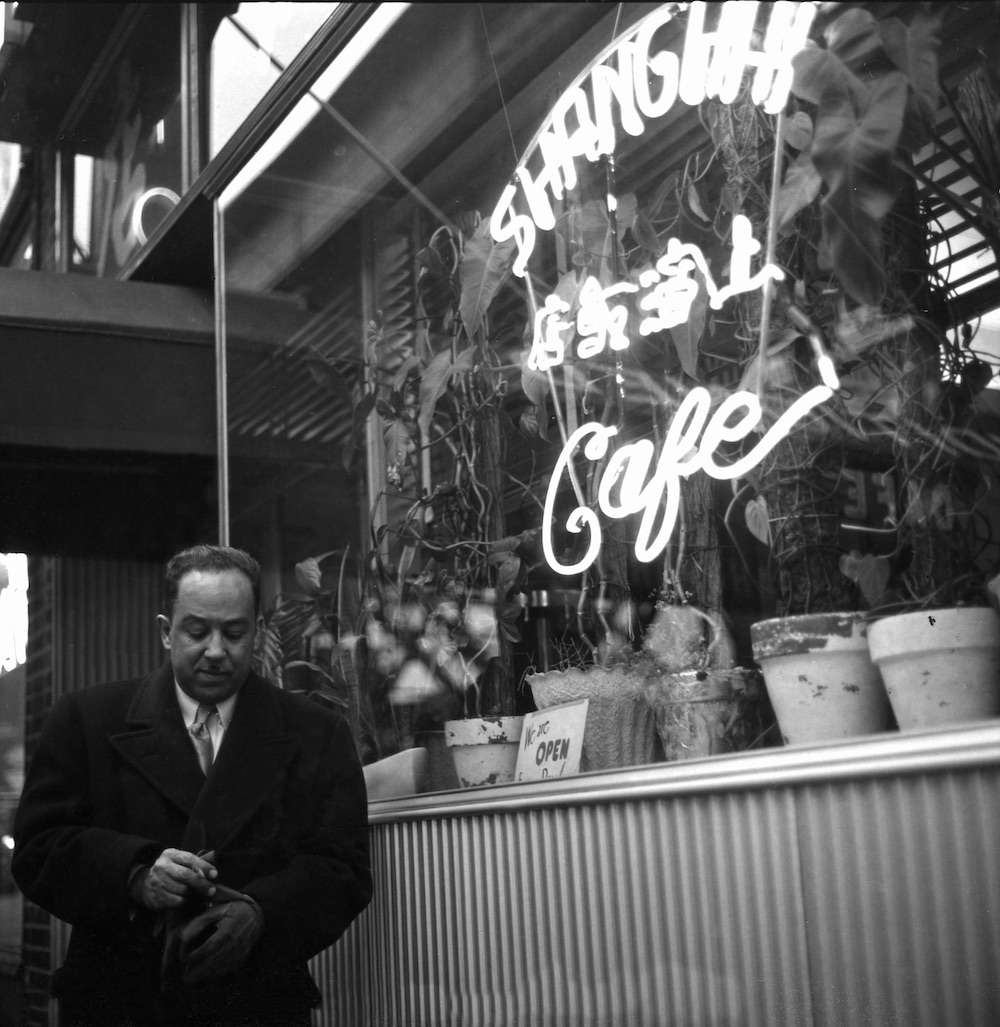 Poet Langston Hughes outside the Shanghai Café, ca. 1955.G. Marshall Wilson/Johnson Publishing Company Archive
Poet Langston Hughes outside the Shanghai Café, ca. 1955.G. Marshall Wilson/Johnson Publishing Company Archive
Private Value and Meaning
Ebony encompassed a visual legacy that reflected the bittersweet, melancholic, and joyful complexities within the African American experience. There is no more important archive of twentieth-century African American life and culture.
LeRonn P. BrooksPh.D., Associate Curator, Modern and Contemporary Collections, Getty Research Institute
Johnson Publishing photographers led the way by picturing their subjects with intimacy. Important moments received in-depth coverage from the company’s bureaus around the country. Within each photograph, there exists intimacy between photographer and subject that, on a smaller scale, conveys a feeling of unguarded poise and ease. These images are simultaneously iconic and personal. Behind the walls of segregation, and the self-doubt they attempted to impose on black lives, there exists grace within the mundane and rapture amidst quiet and solitude. In Maurice Sorrell’s photograph of Benjamin Mays, for example, from temple to shoulder, light confers the former Morehouse president with a resonant wisdom, regality, and acuity. His poise as stalwart and synonymous with enlightenment as the texts that surround and inform his life.
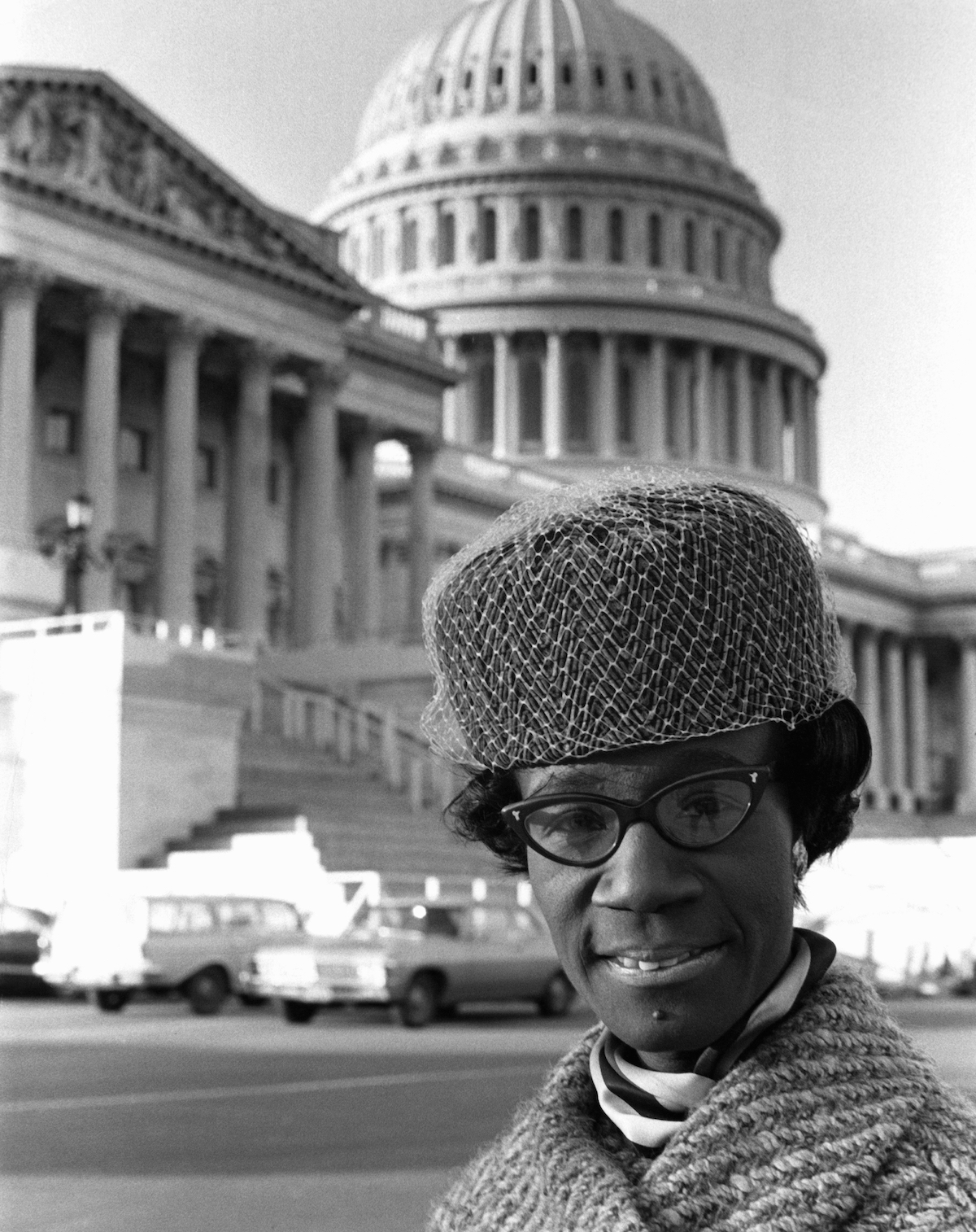 Congresswoman Shirley Chisholm had recently become the first African American female member of Congress when this photograph was taken in 1969. That same year, she was also a founding member of the Congressional Black Caucus, 1969.Maurice Sorrell/Johnson Publishing Company Archive
Congresswoman Shirley Chisholm had recently become the first African American female member of Congress when this photograph was taken in 1969. That same year, she was also a founding member of the Congressional Black Caucus, 1969.Maurice Sorrell/Johnson Publishing Company Archive
Staff photographers such as Pulitzer Prize winner Moneta Sleet Jr., David Jackson, and Isaac Sutton, among others, played important roles in John H. Johnson’s vision of producing ennobled and representative imagery. They photographed prominent African American public figures such as Coretta Scott King, Nina Simone, Shirley Chisholm, and Leontyne Price.
We believed then – and we believe now – that image power is a prerequisite of economic and political power.
John H. Johnson"Publisher's Statement," November 1975
In a duet between the photographer’s lens and the trust bestowed upon them by their subjects, there exists a psychological closeness due to their unique proximity that no other publications matched. The golden moments of melancholy and contemplation exemplified by Moneta Sleet Jr.’s photograph of Billie Holiday, with her head tilted, her chin cupped gently in her palm, and her attention traveling elsewhere. These photographs pull warmth from the image’s grayscale and in the distance between the camera and its subject’s contemplative presence, empathy walks along this meaningful exchange.
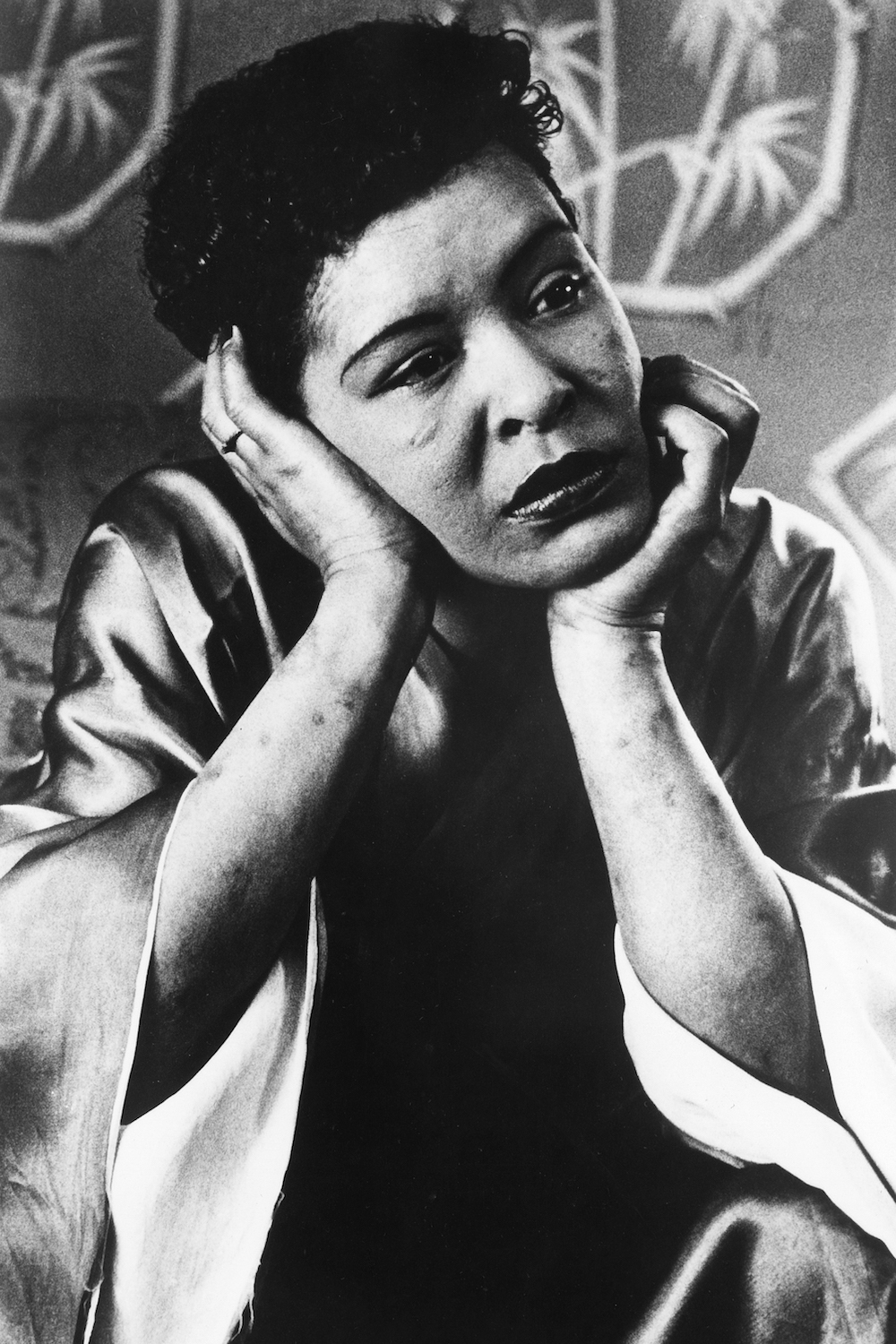
Billie Holiday published her autobiography in 1956, and Johnson Publishing shared her complex and sometimes tragic story. Ebony attributes this photo to being taken in 1949.Moneta Sleet Jr./Johnson Publishing Company Archive
We felt in 1945 and we feel now that our story, the story of our hopes and hurts, the story of our dreams and agonies and triumphs, is one of the most eloquent and important stories in the world. We felt in 1945 – and we feel now – that story is central to the meaning and redemption of America.
John H. Johnson "Publisher’s Statement," November 1975
Who would one allow in the room as subjects sing the praises of their souls? Who would one trust to witness such vulnerability? If lives could be sung, these photographs capture the beauty of the song while reminding us of the solace of kin and the importance of sovereignty over one’s self. Sidney Poitier playfully raising his daughter to the ceiling during a moment of pure joy. Maya Angelou writing in bed, with books lying in idle orbit. Things too often denied the descendants of the enslaved flush with introspection amidst acts of self-care and solemnity. Here the intimate lives of public figures are braided with an everydayness synonymous with our own striving, sorrow, joy, and peace, all enveloped by cultural trust. There are rooms we will never see here and spaces, if only in their minds, they will never lay bare for public consumption. What remains is a legacy of respect for the sanctity of black life.
Then Ebony arrived in 1945 … to inform us and assure us that our lives were so important, they could never be edited out of the history of our people. Maya Angelou "Then Ebony Arrived," November 1995
The Johnson Publishing Collection
The Johnson Publishing Company Archive was acquired in 2019 by a not-for-profit consortium that consists of the Smithsonian Institution, the J. Paul Getty Trust, the Ford Foundation, the Andrew W. Mellon Foundation, and the John D. And Catherine T. MacArthur Foundation. The collection includes 3.35 million negatives and slides, 983,000 photographic prints, 166,000 contact sheets, and 9,000 audio and visual recordings. The consortium seeks to preserve, study, and digitize the Archive and to make it broadly accessible to the public.
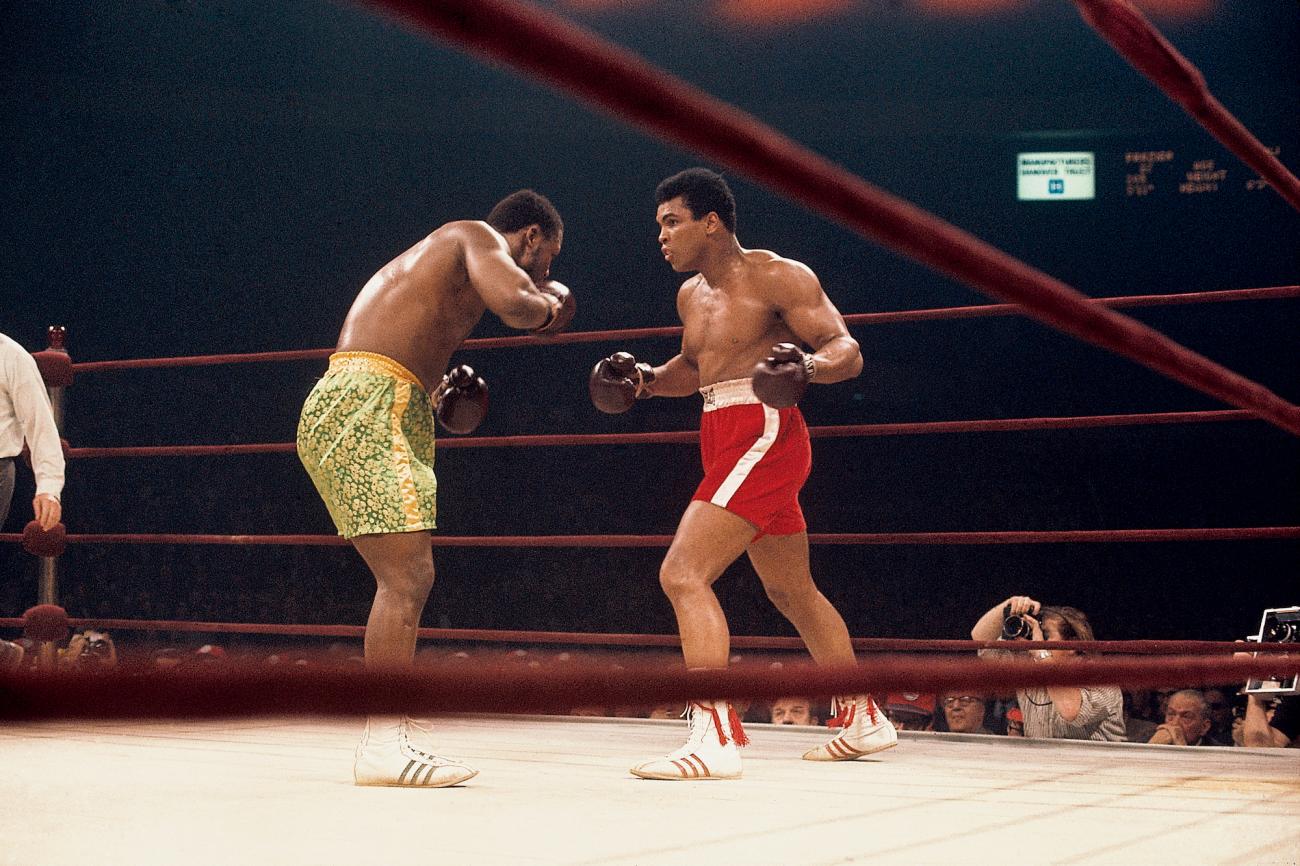
Muhammad Ali and Joe Frazier, 1971
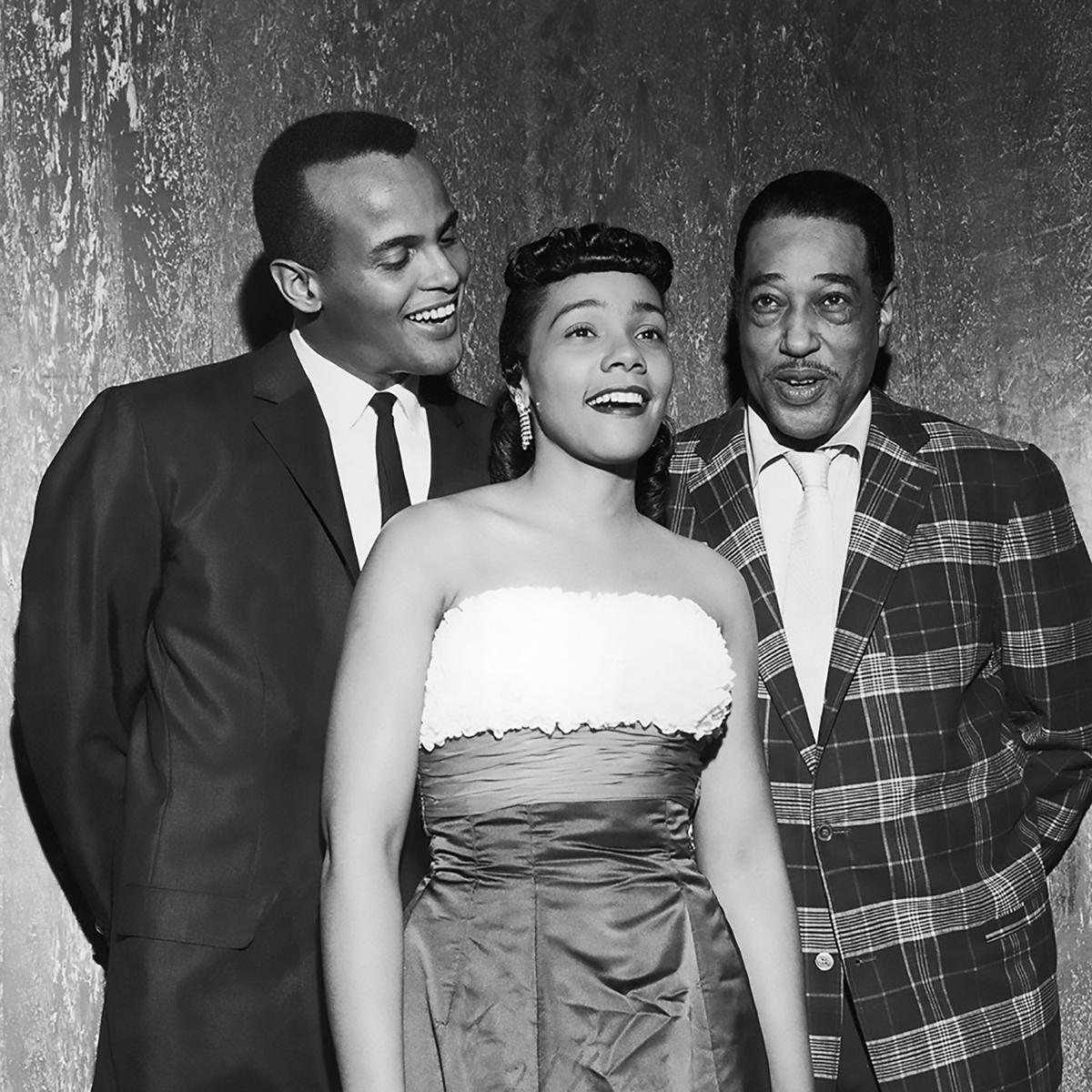
Harry Belafonte, Coretta Scott King, and Duke Ellington, 1956
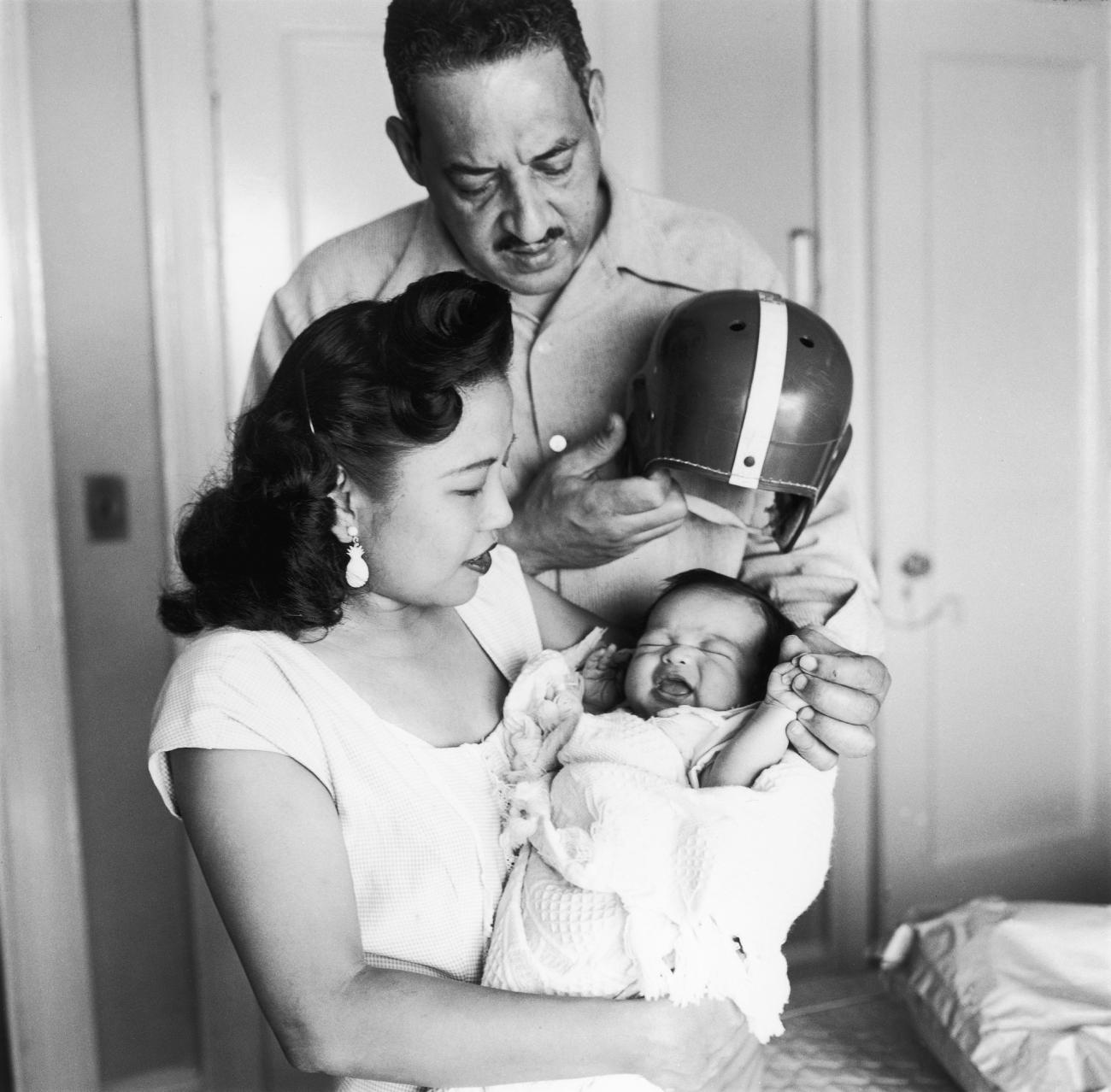
Thurgood Marshall, his wife Cecilia, and their son, Thurgood Jr., 1956
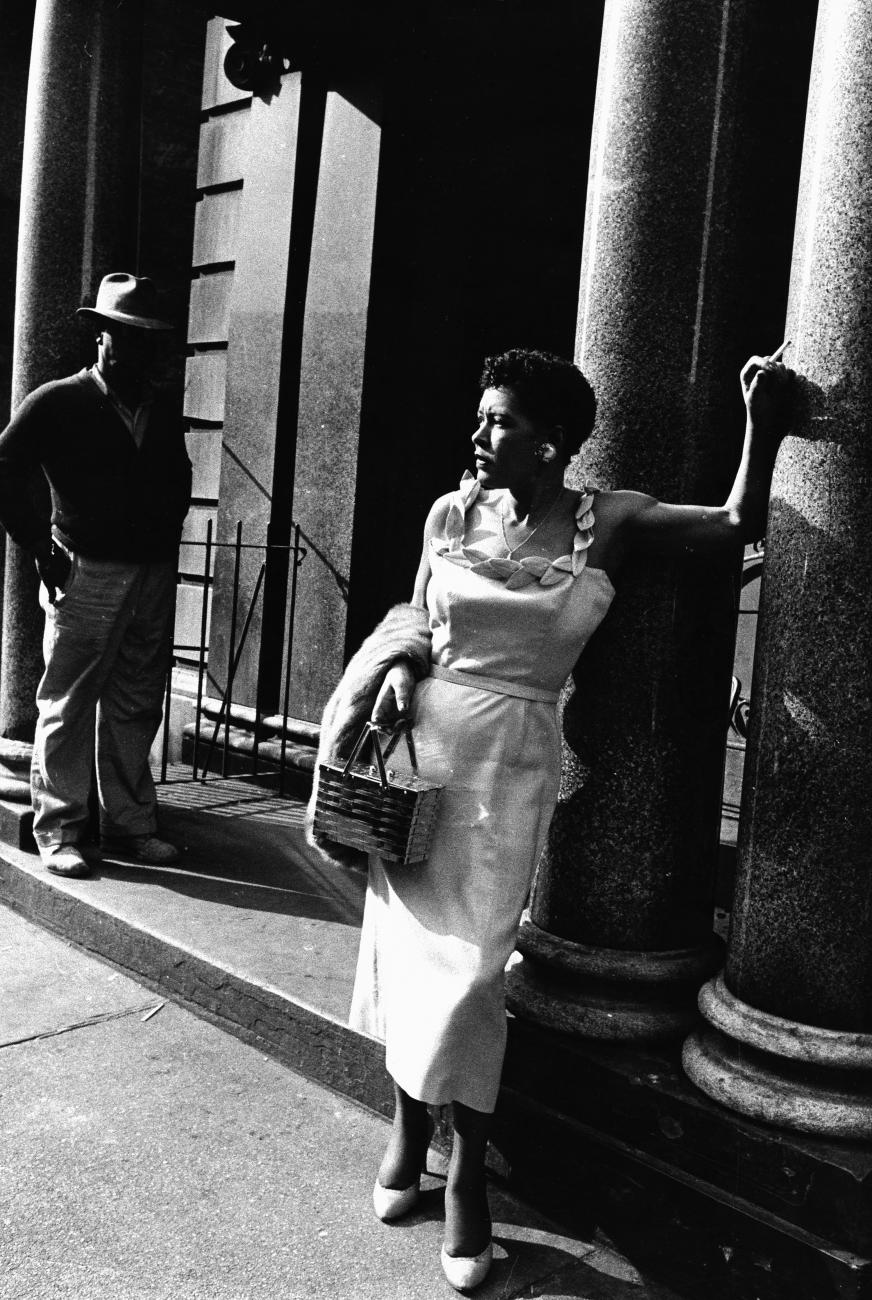
Billie Holiday, 1956
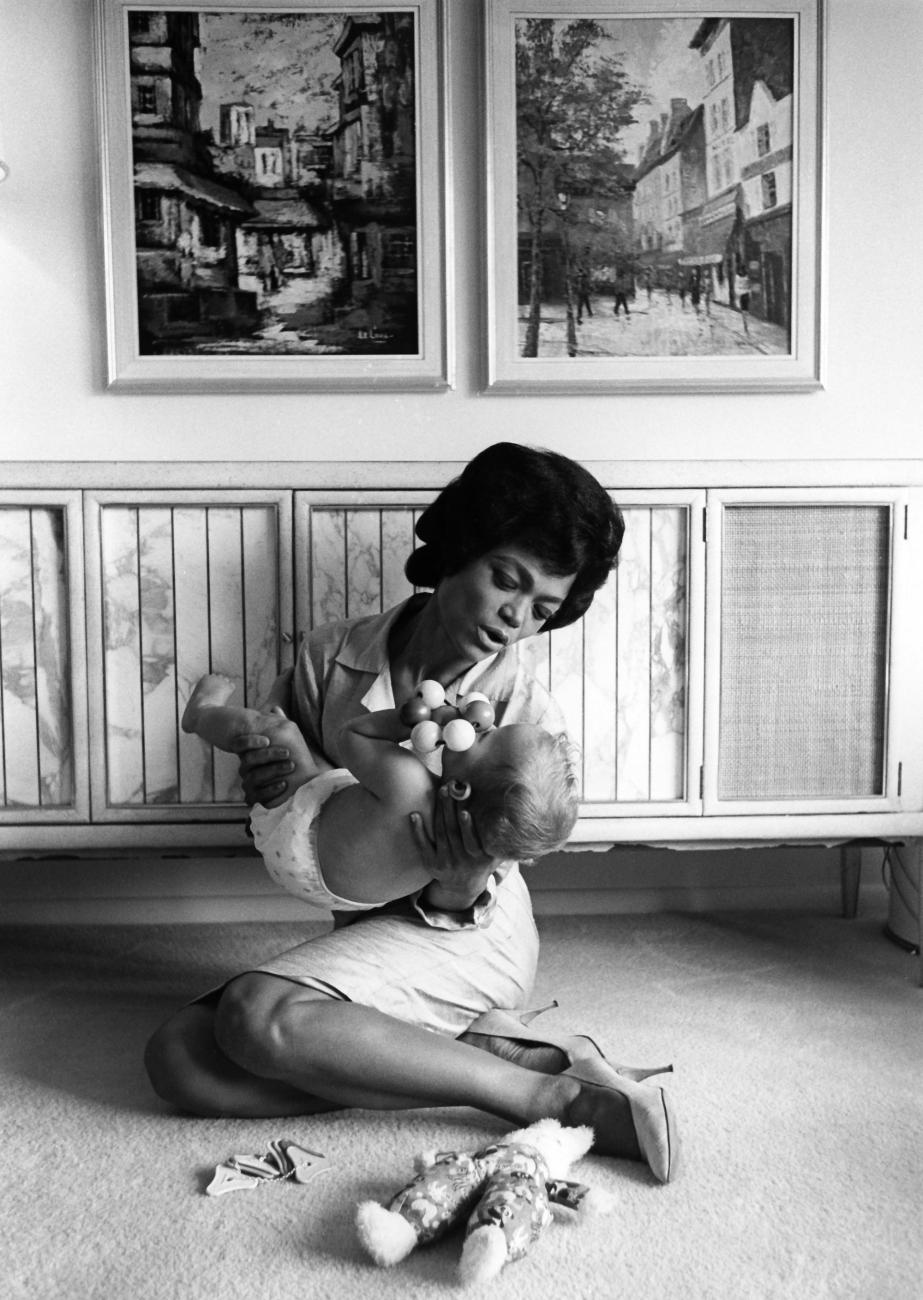
Eartha Kitt with her daughter Kitt, 1963
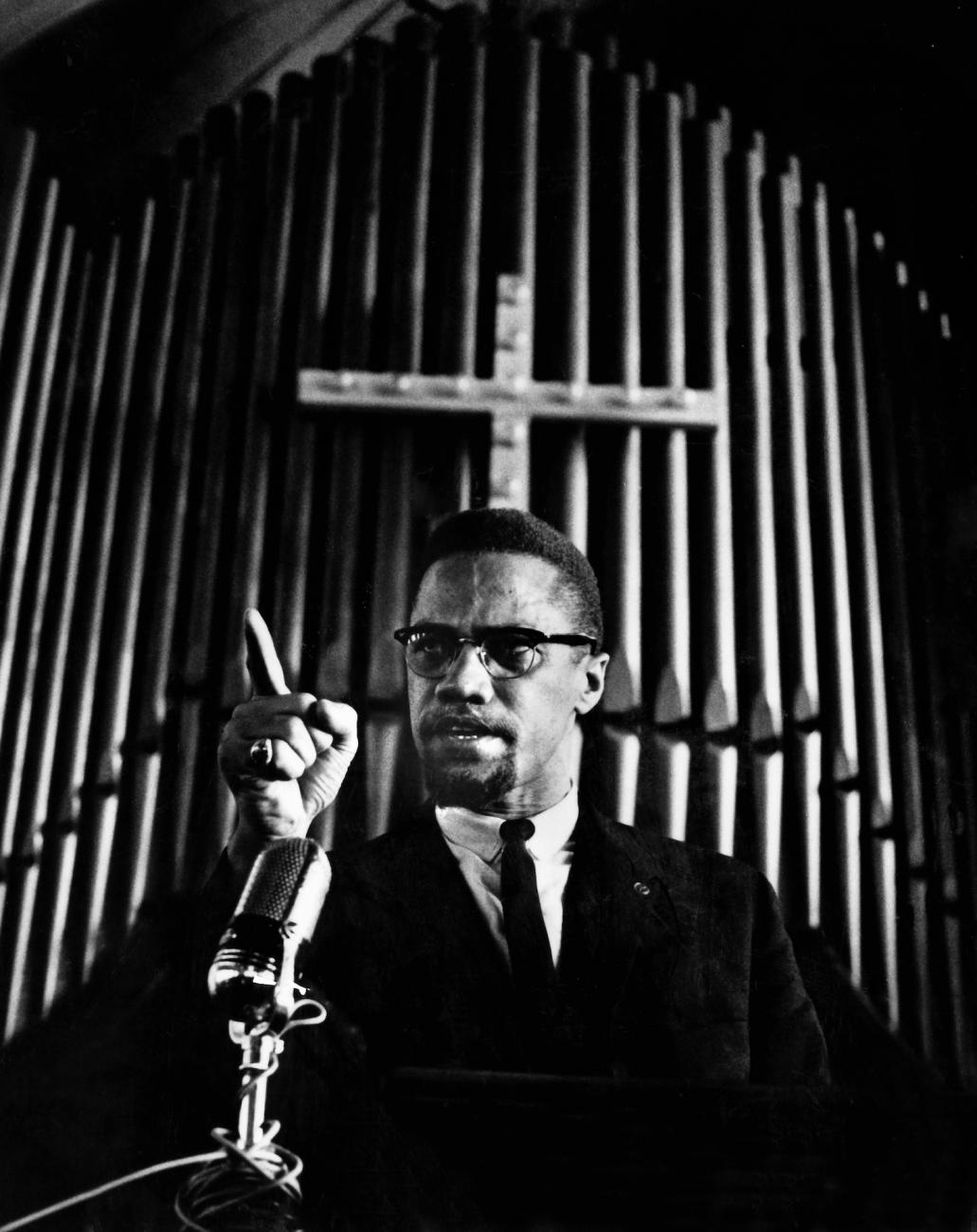
Malcolm X, 1965
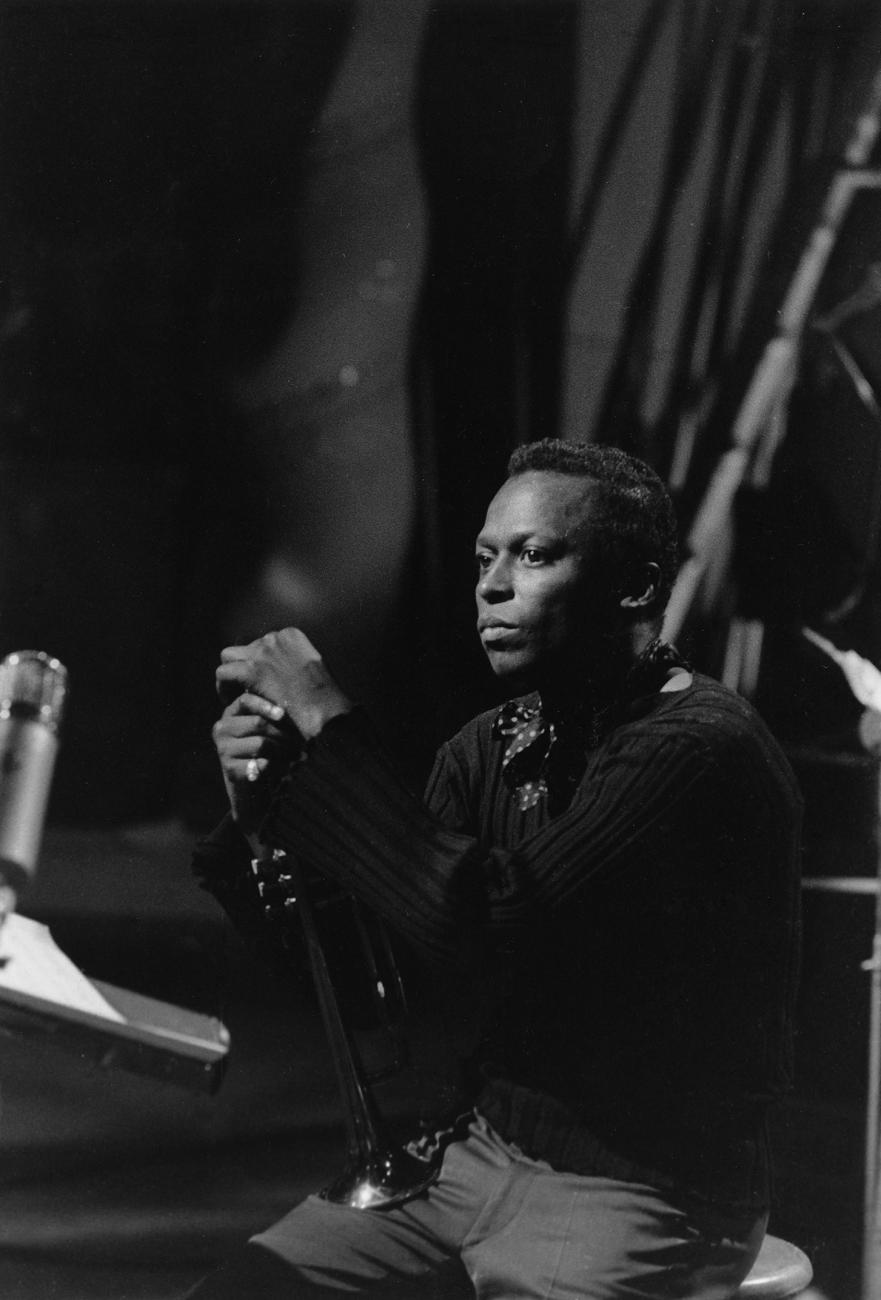
Miles Davis, 1961
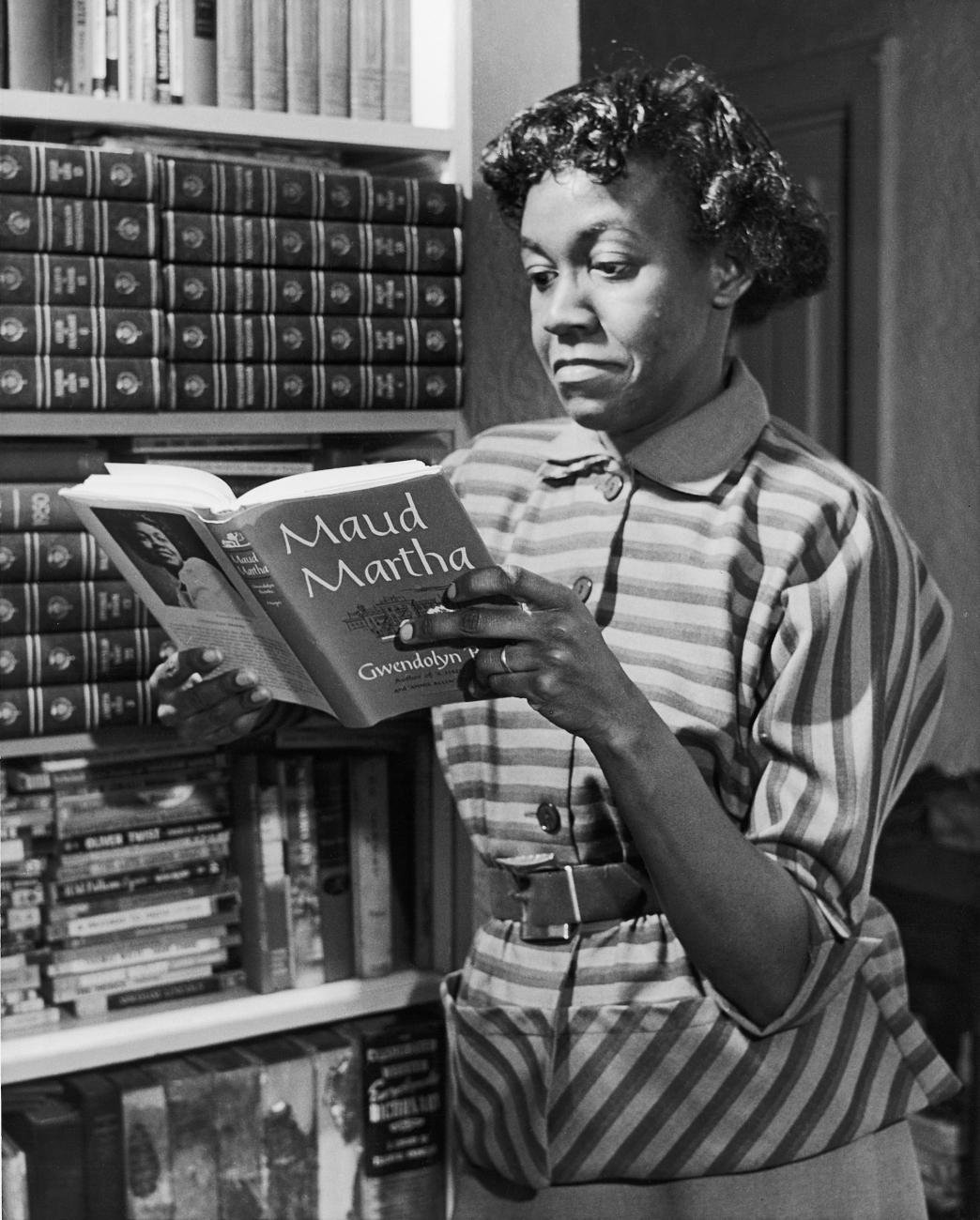
Gwendolyn Brooks
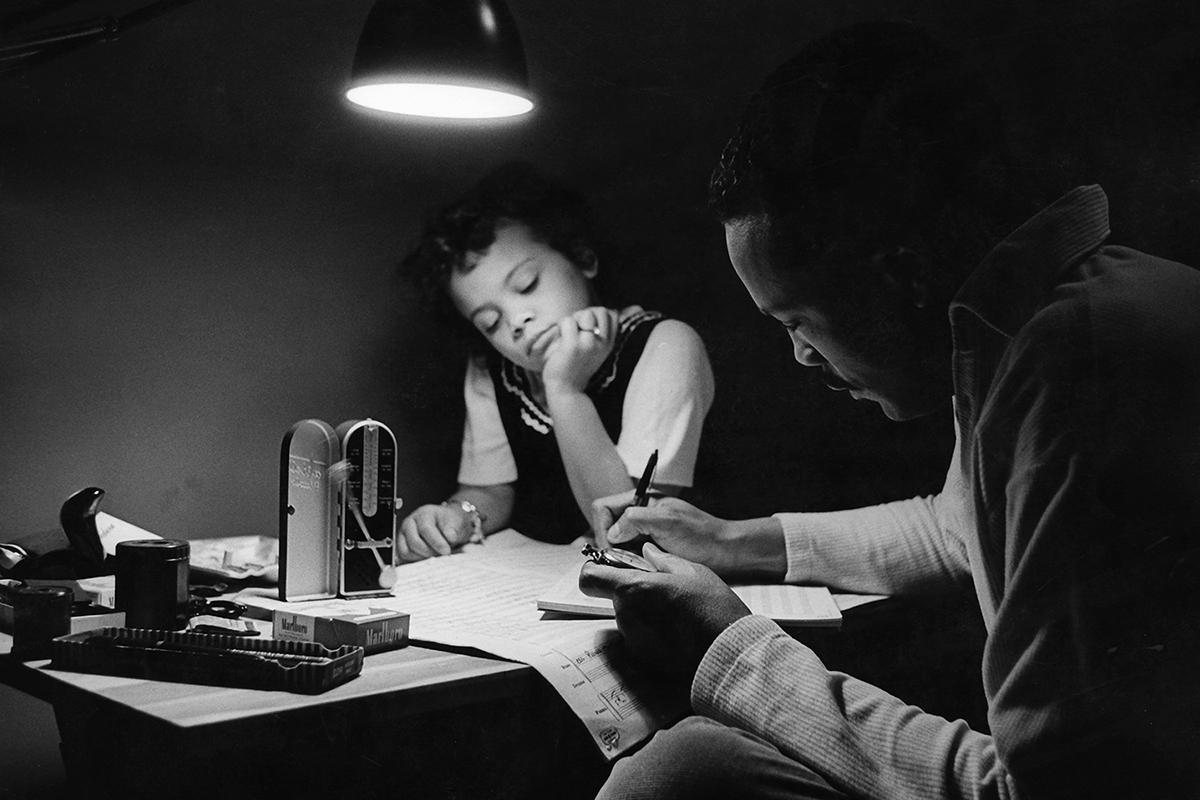
Quincy Jones with his daughter, Jolie, ca. 1961
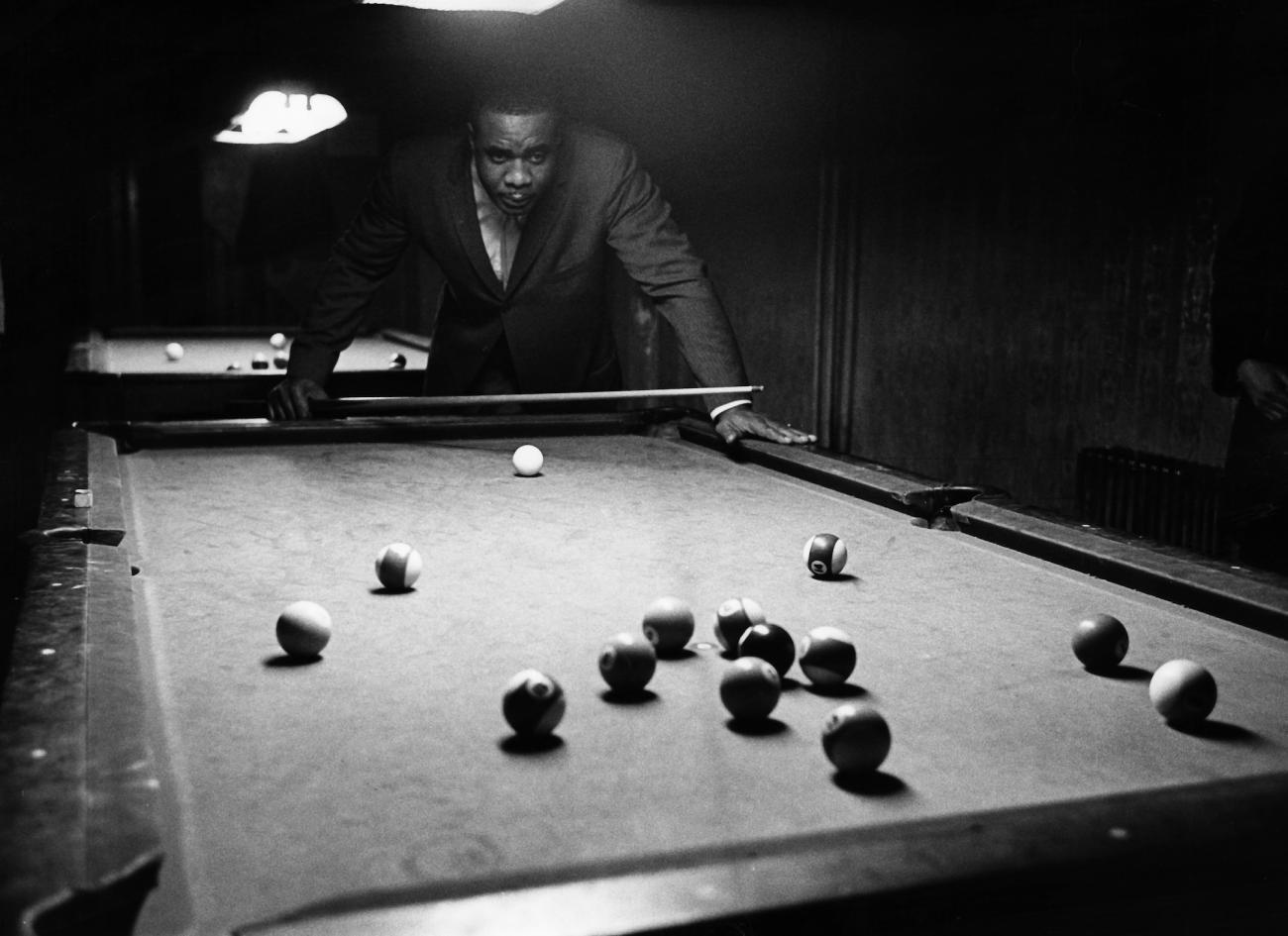
Sonny Liston, 1962
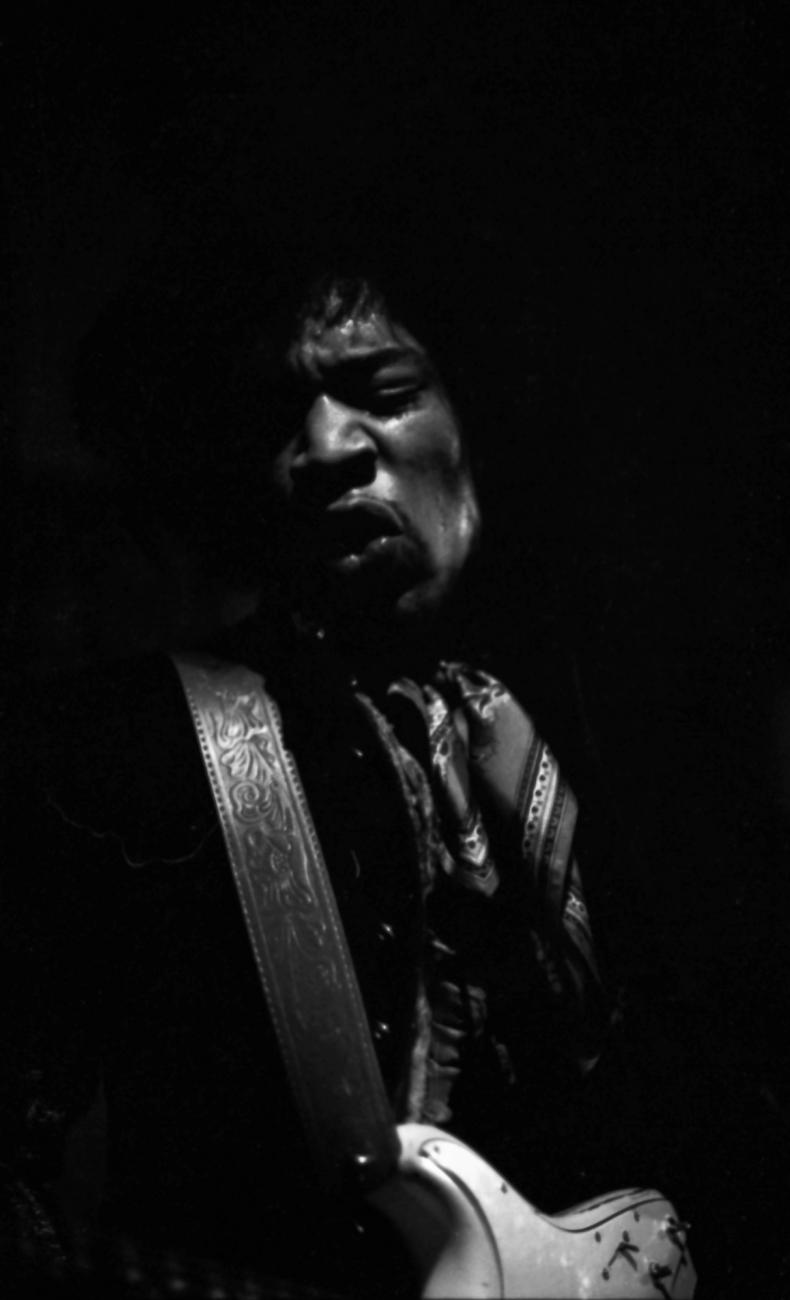
Jimi Hendrix, 1968
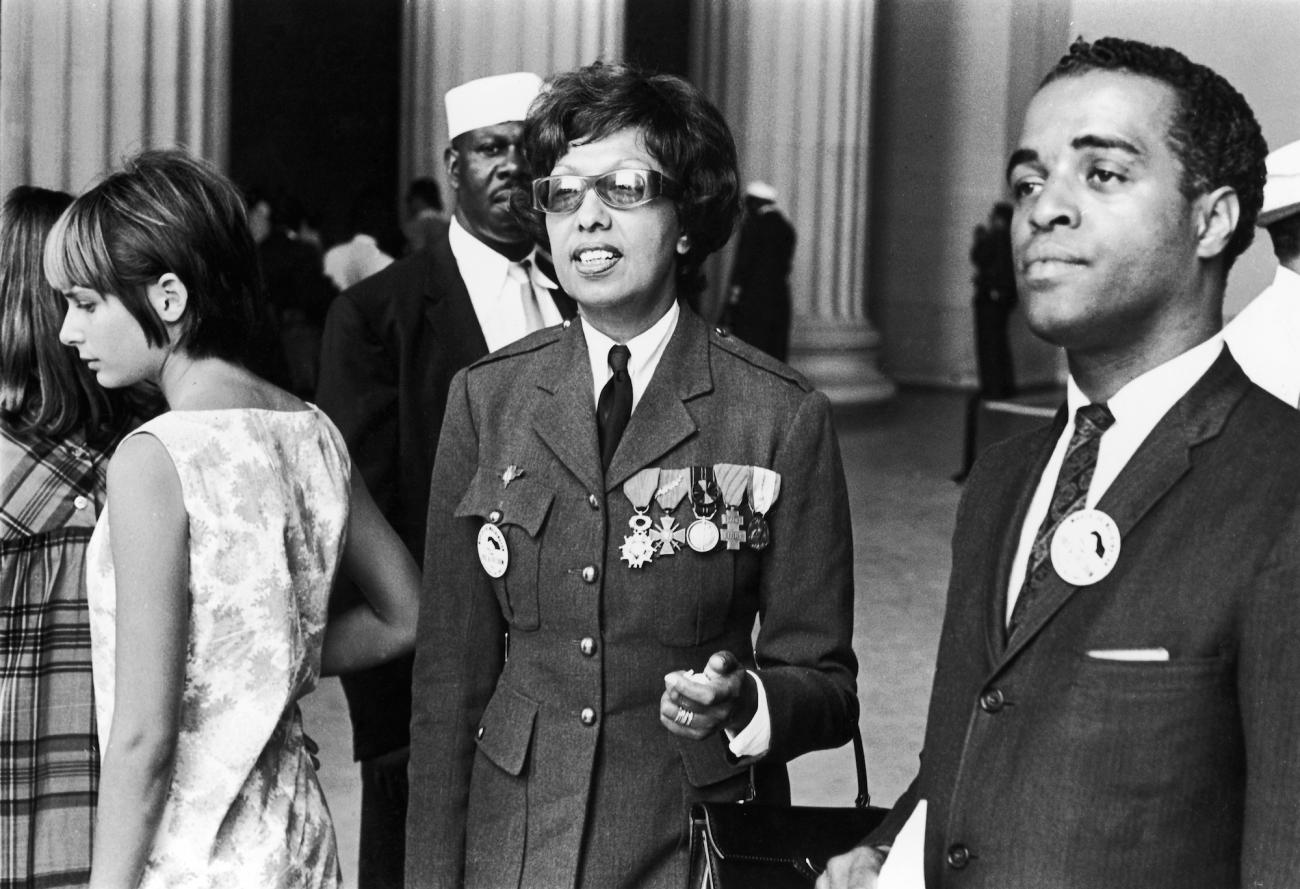
Josephine Baker, 1963
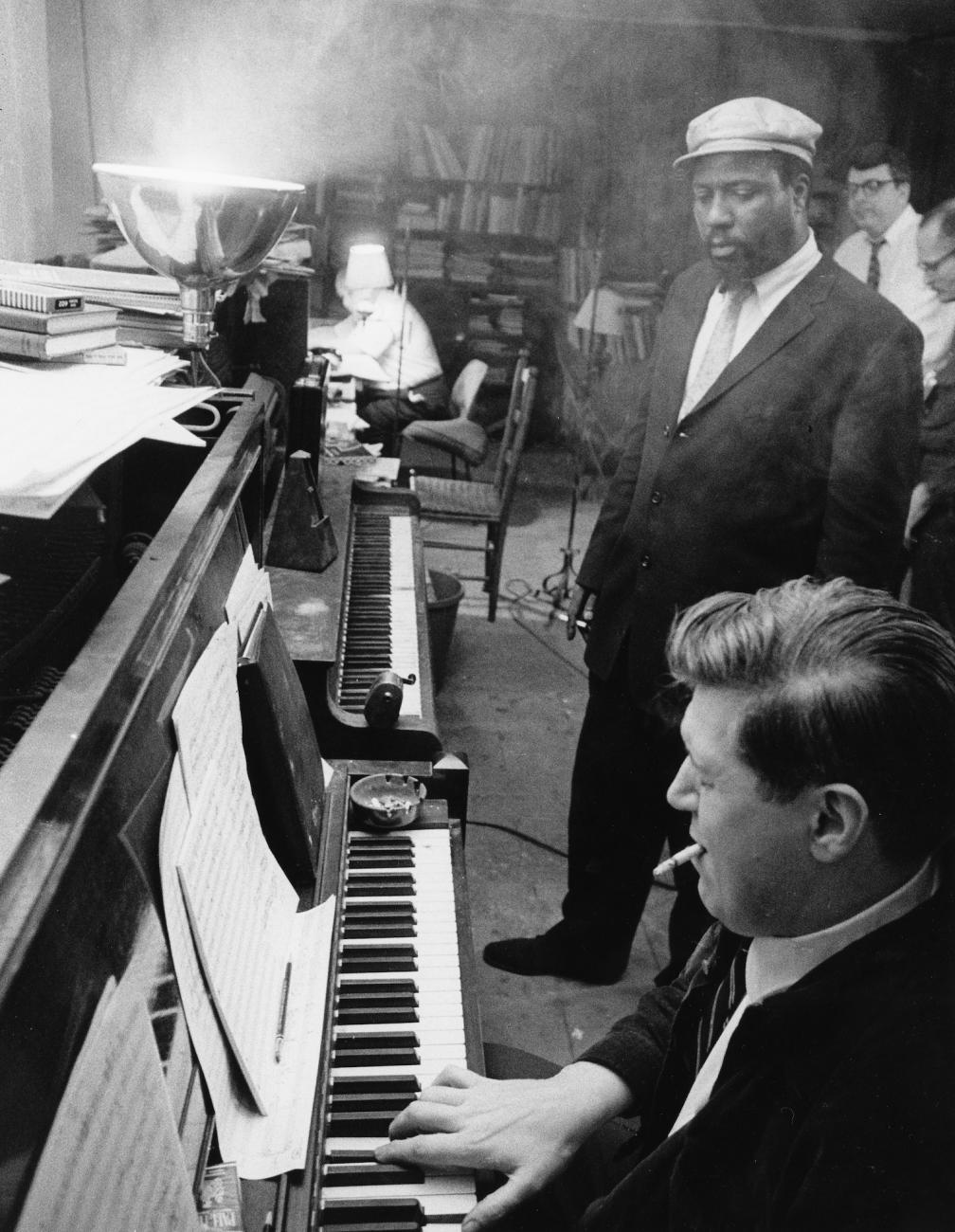
Thelonious Monk with Hall Overton, 1959
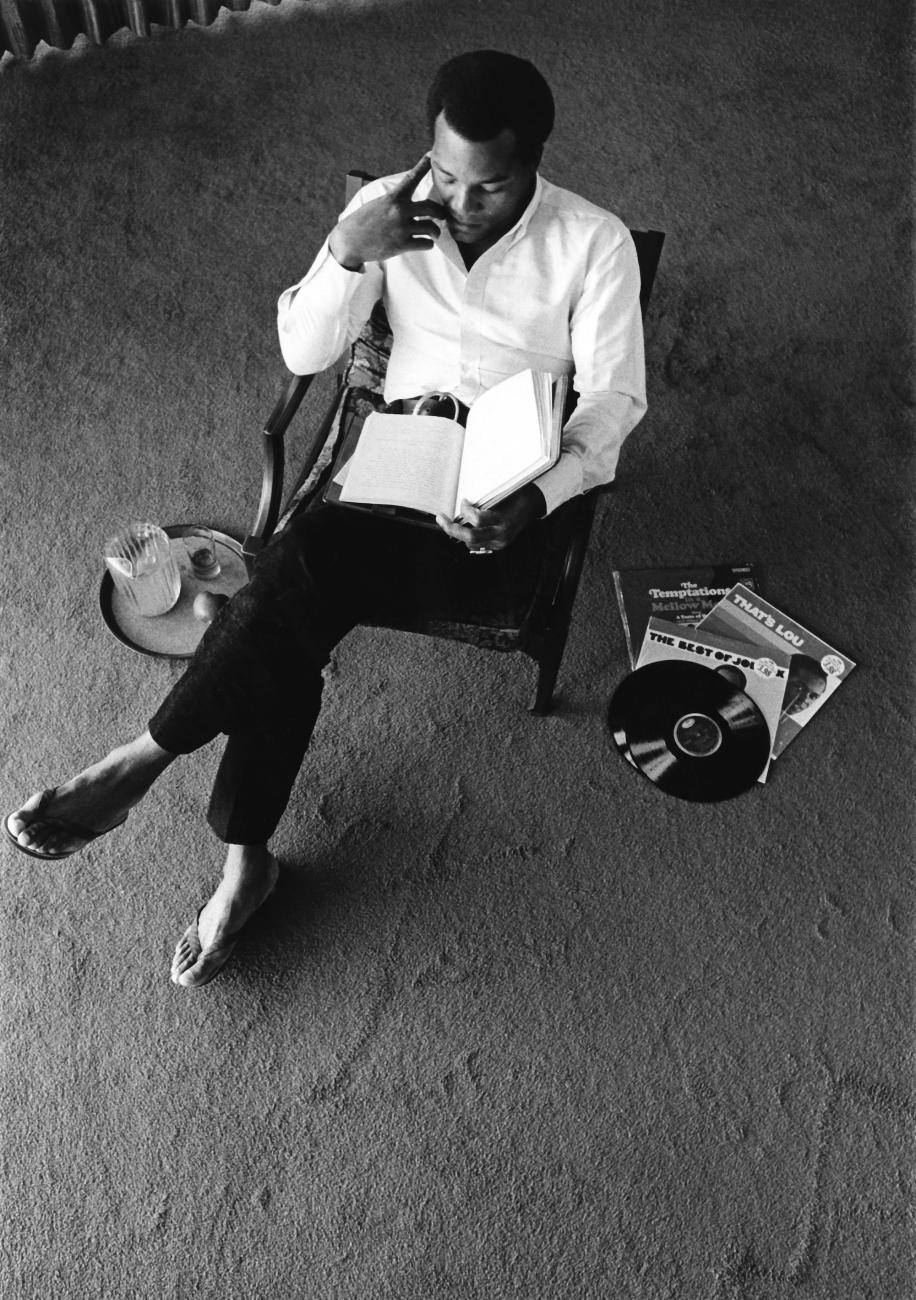
Jim Brown, ca. 1969
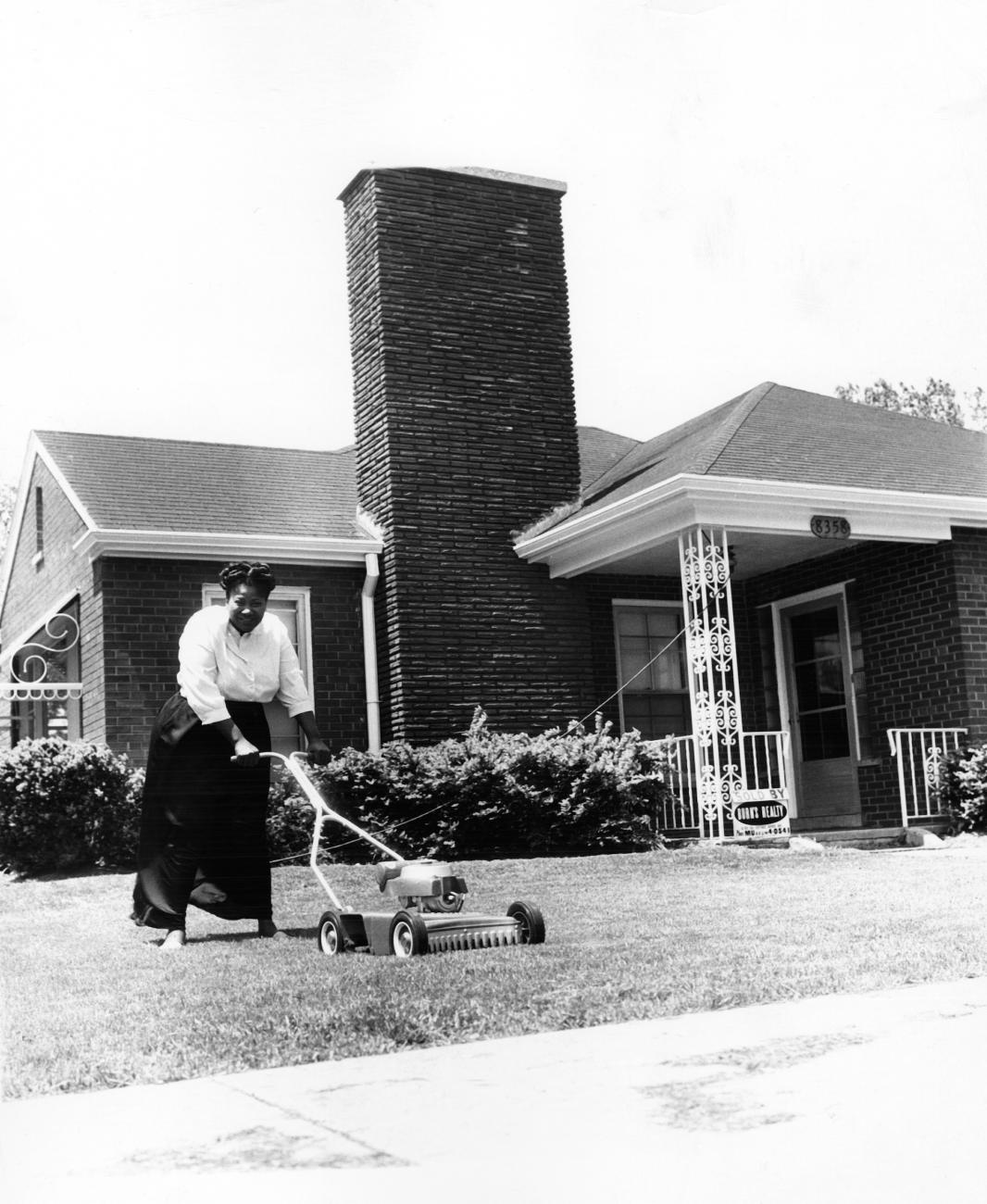
Mahalia Jackson, ca. 1960
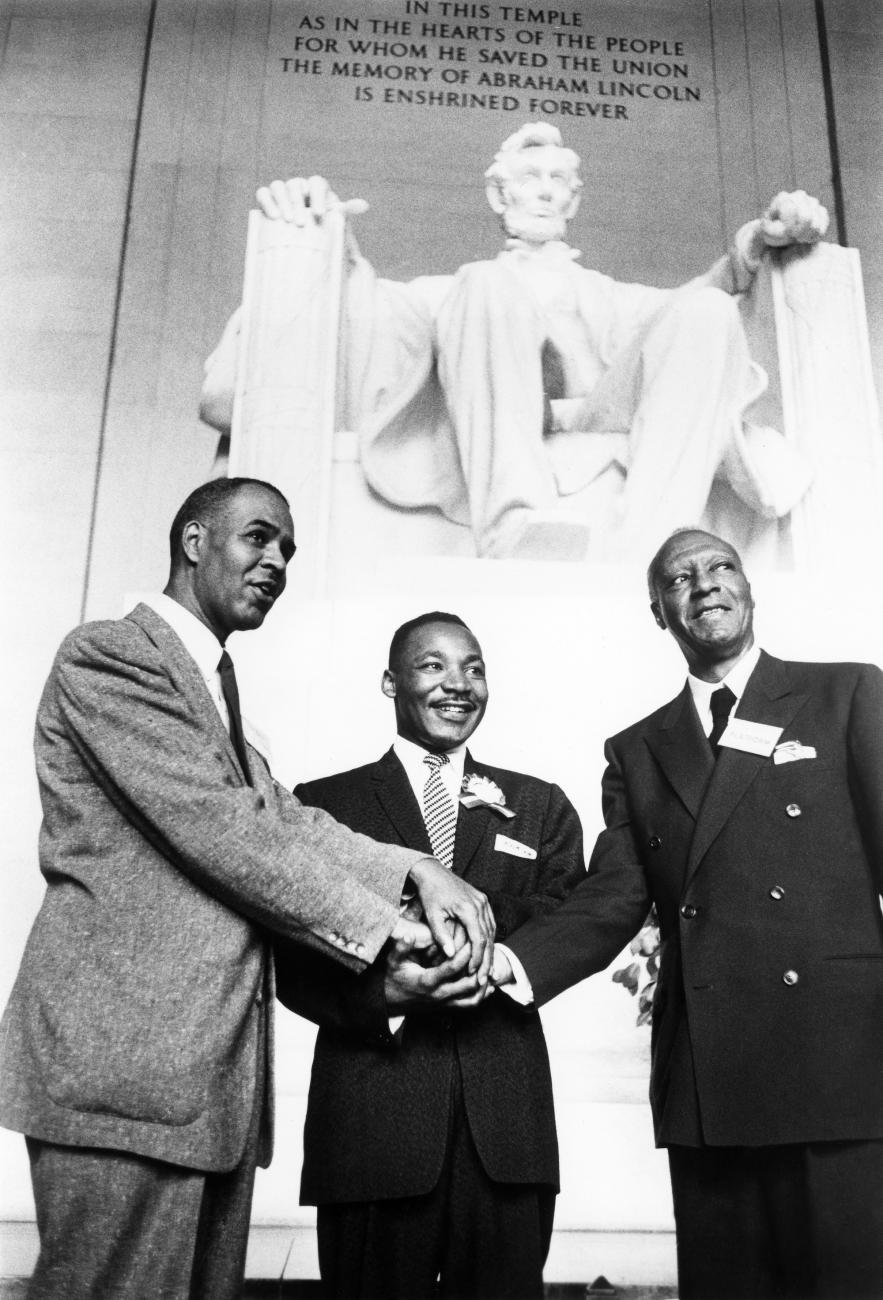
Roy Willkins, Martin Luther King Jr., and A. Philip Randolph, 1957

Lee Elder, 1968
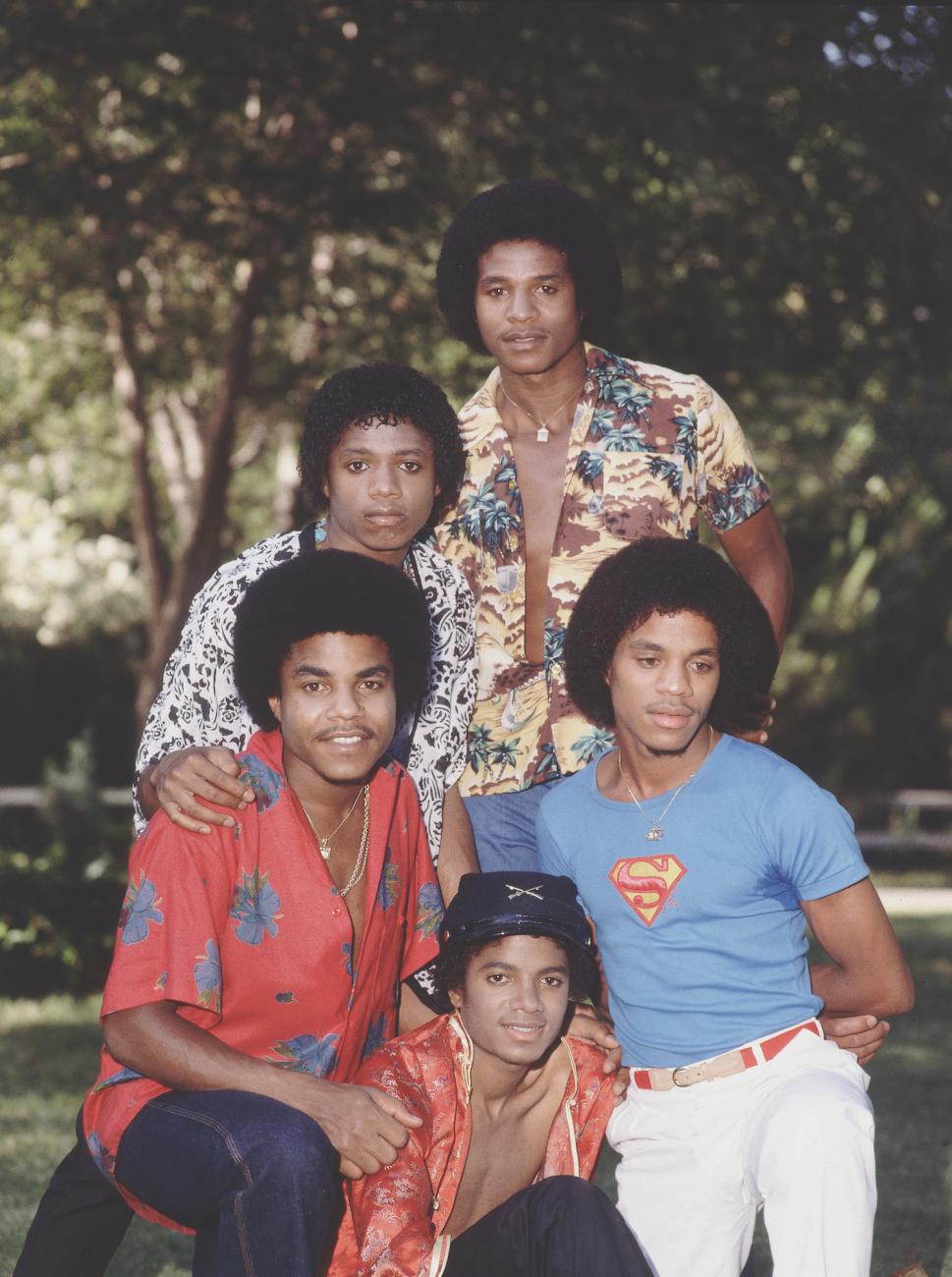
The Jacksons, 1979

Tina Turner, 1982
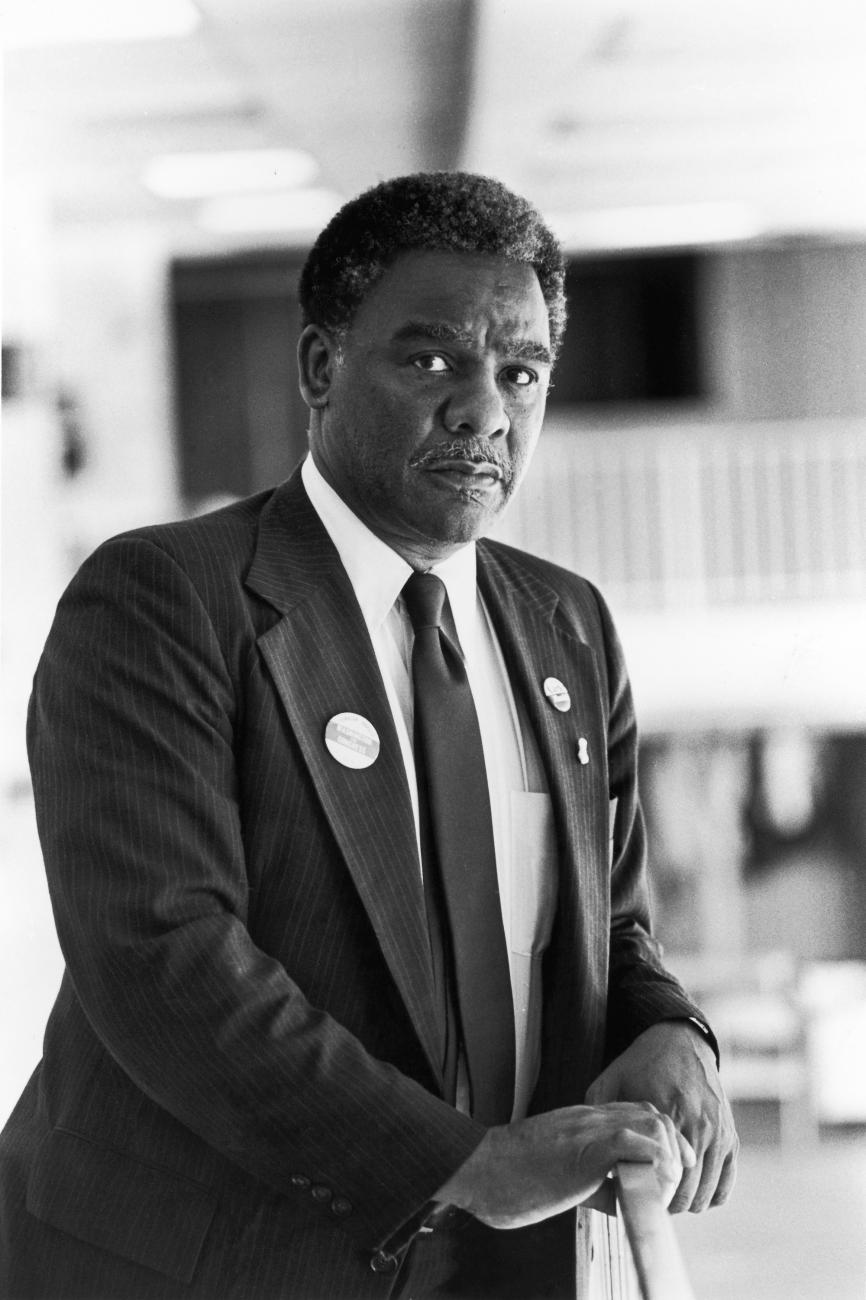
Harold Washington, 1980
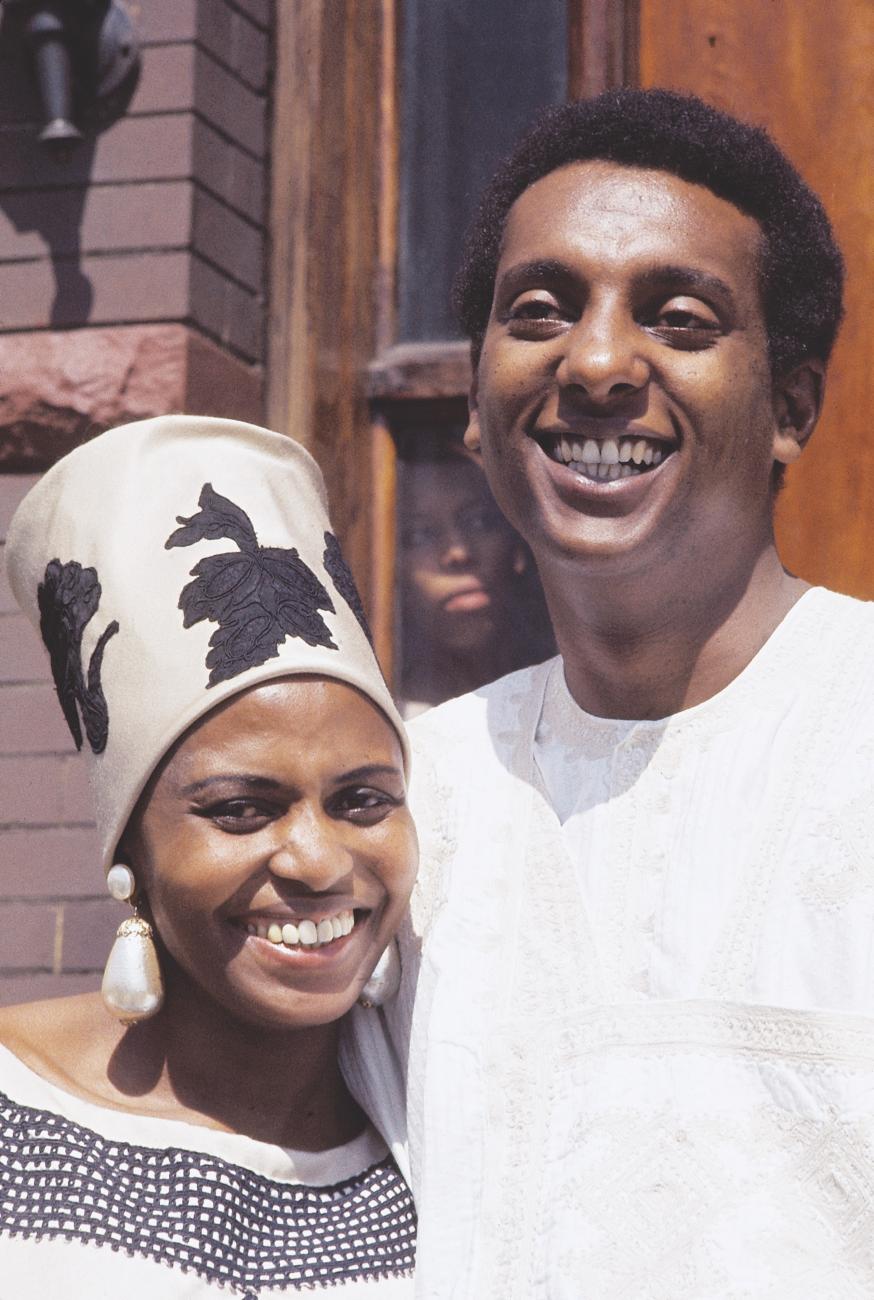
Miriam Makeba and Stokely Carmichael, 1968
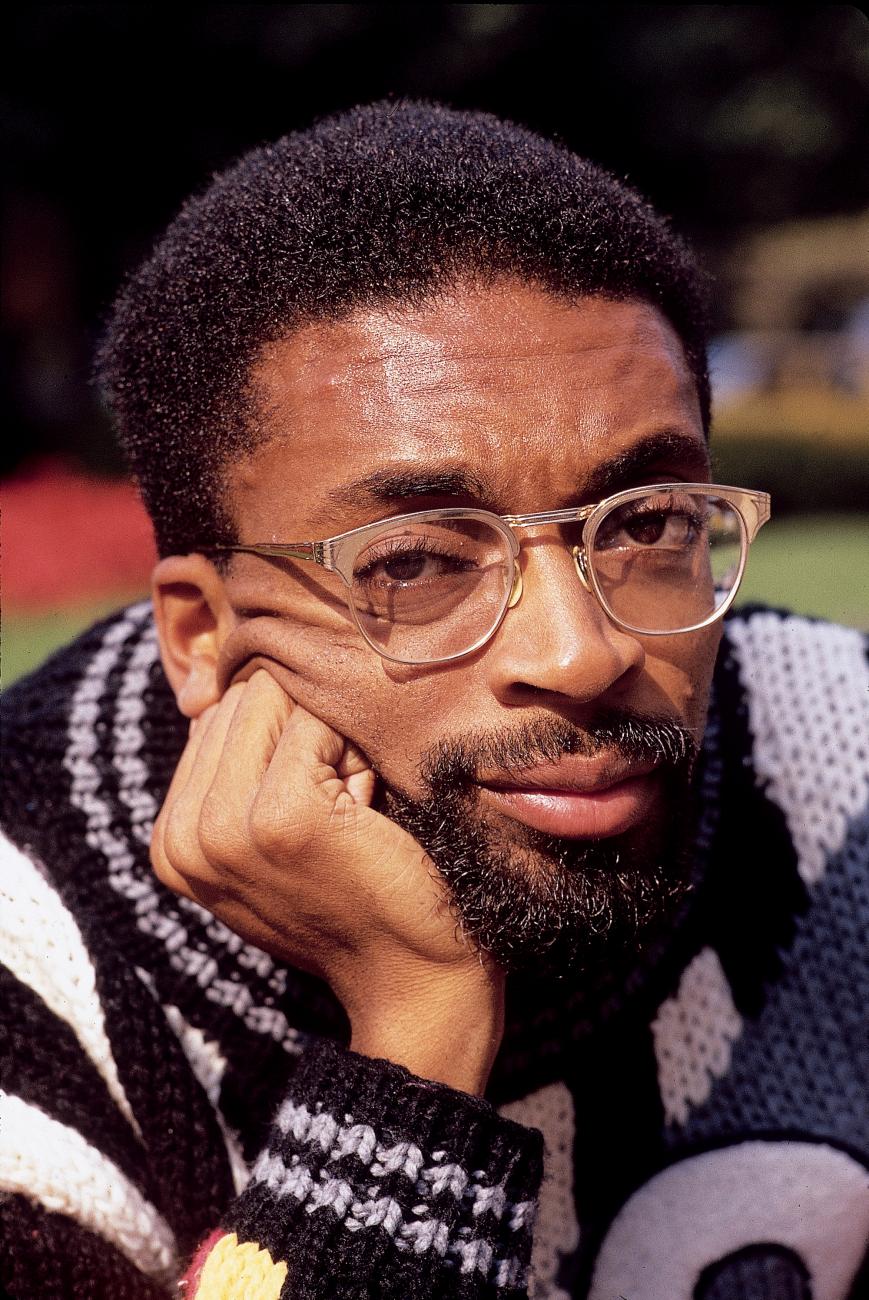
Spike Lee, 1986
Black joy has been shared with Ebony readers through pictures and so has black tragedy … Each camera expert has made a contribution to the ever-unfolding story the magazine continues to tell. Editors, Ebony Magazine "Capsule History: 1945 - 1965," November 1975
John H. Johnson and the Johnson Publishing Company
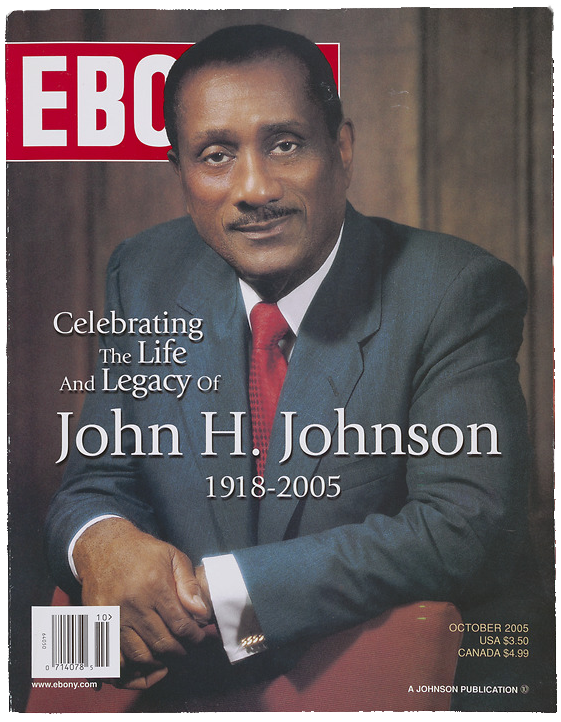 Ebony magazine, Volume LX, Number 12 honoring the life of John H. Johnson, the founder of Johnson Publishing Company, publisher of Ebony magazine.Collection of the Smithsonian National Museum of African American History and Culture, Gift of the Bunch Family
Ebony magazine, Volume LX, Number 12 honoring the life of John H. Johnson, the founder of Johnson Publishing Company, publisher of Ebony magazine.Collection of the Smithsonian National Museum of African American History and Culture, Gift of the Bunch Family
John H. Johnson (1918-2005) launched Ebony magazine with the goal of producing a journal to chronicle African American lives. While Ebony’s first issue totaled 25,000 copies, by its sixtieth year in 2005, the publication reached ten million readers. The Johnson Publishing Company began in 1942, with the company’s first magazine, Negro Digest. Over the course of its history, the company evolved to produce books, films, television and radio programs, a record club, fashion shows, Fashion Fair cosmetics, and a roster of fifteen magazines, including Ebony, Jr!, Jet, and Negro Digest, which became Black World in 1970. Ebony however remained Johnson Publishing's leading publication from its inception in 1945, to its final print in May 2019.
Our mission is to tell black America, and the world, what black America is thinking, doing, saying, feeling, and demanding. Our mission is to tell it not only like it is but also like it was and like it must be.
John H. Johnson Publisher’s Statement, November 1975
Image Top: Muhammad Ali and Joe Frazier in the "Fight of the Century" at Madison Square Garden, New York, March 1971. Moneta Sleet Jr./Johnson Publishing Company Archive
All photos are from the Johnson Publishing Company Archive. Courtesy Ford Foundation, J. Paul Getty Trust, John D. and Catherine T. MacArthur Foundation, Andrew W. Mellon Foundation, and Smithsonian Institution.
